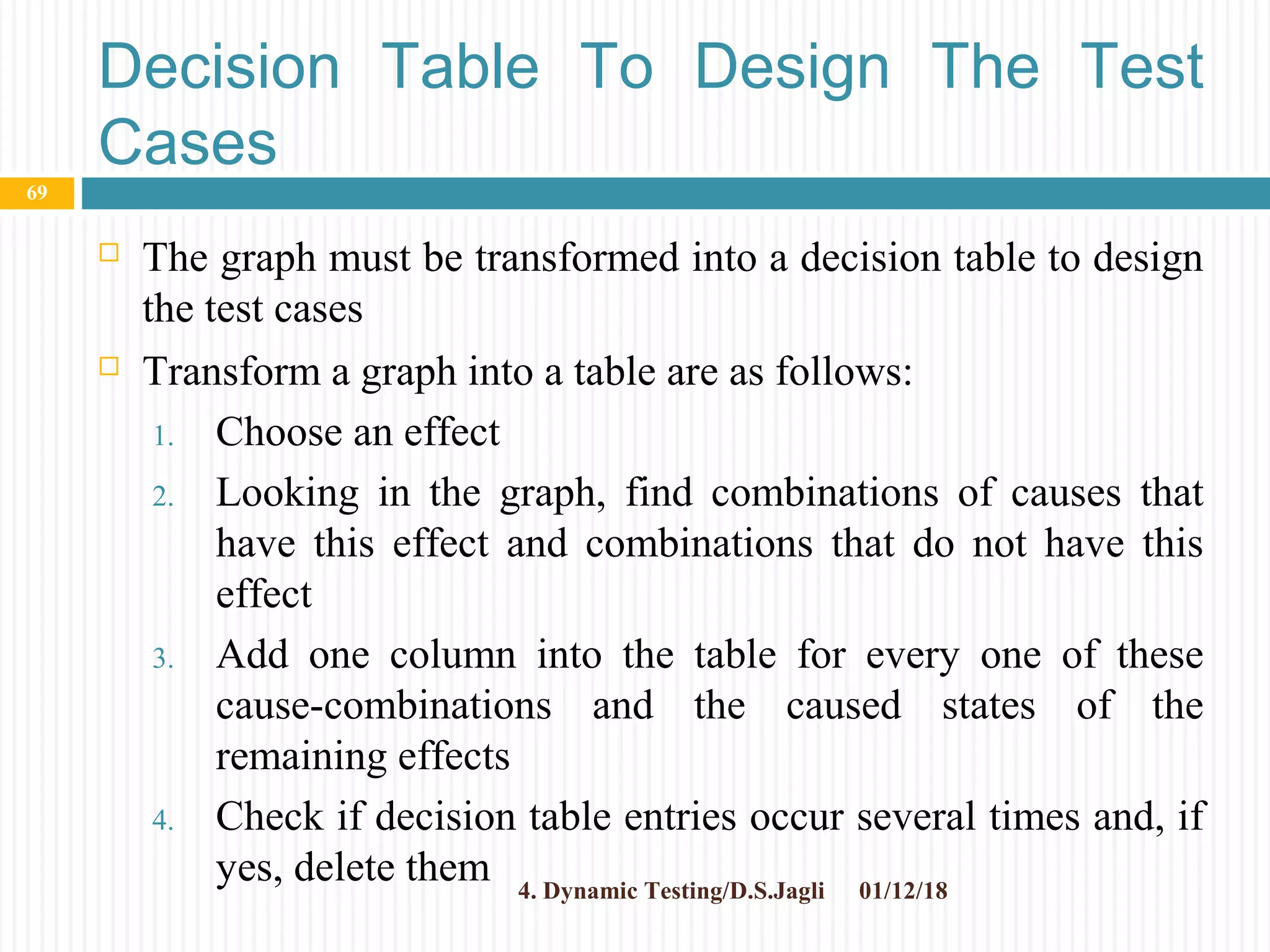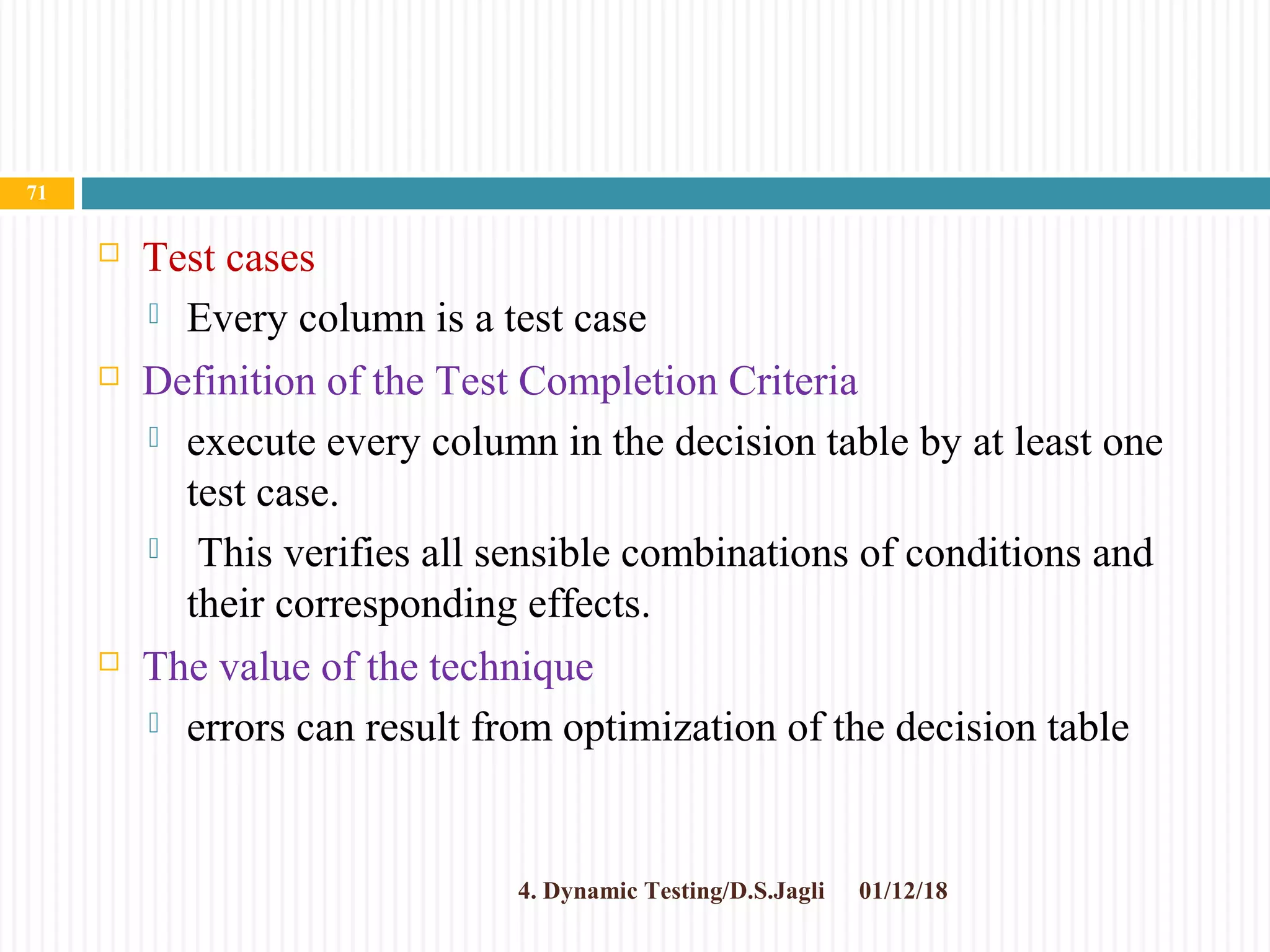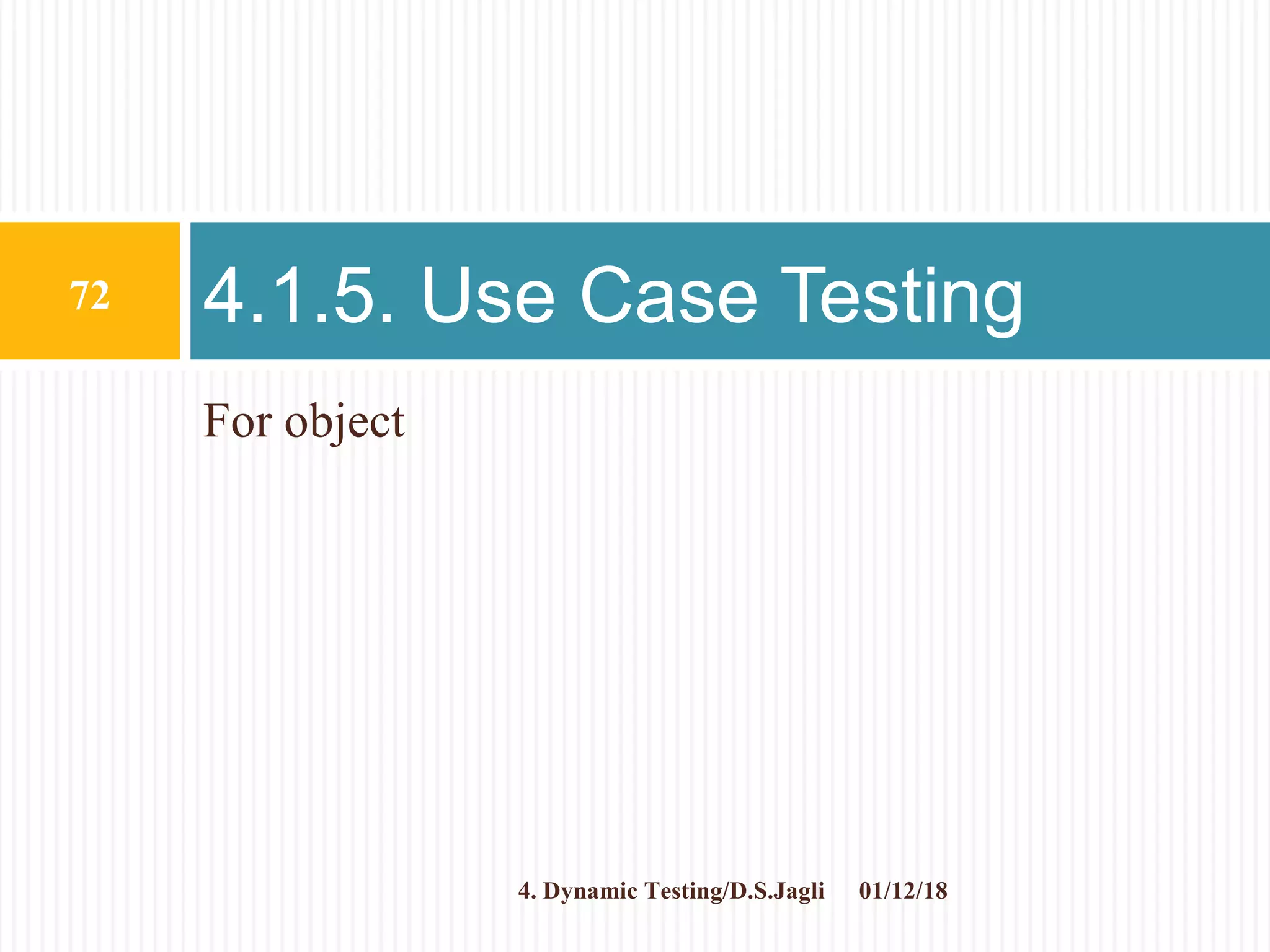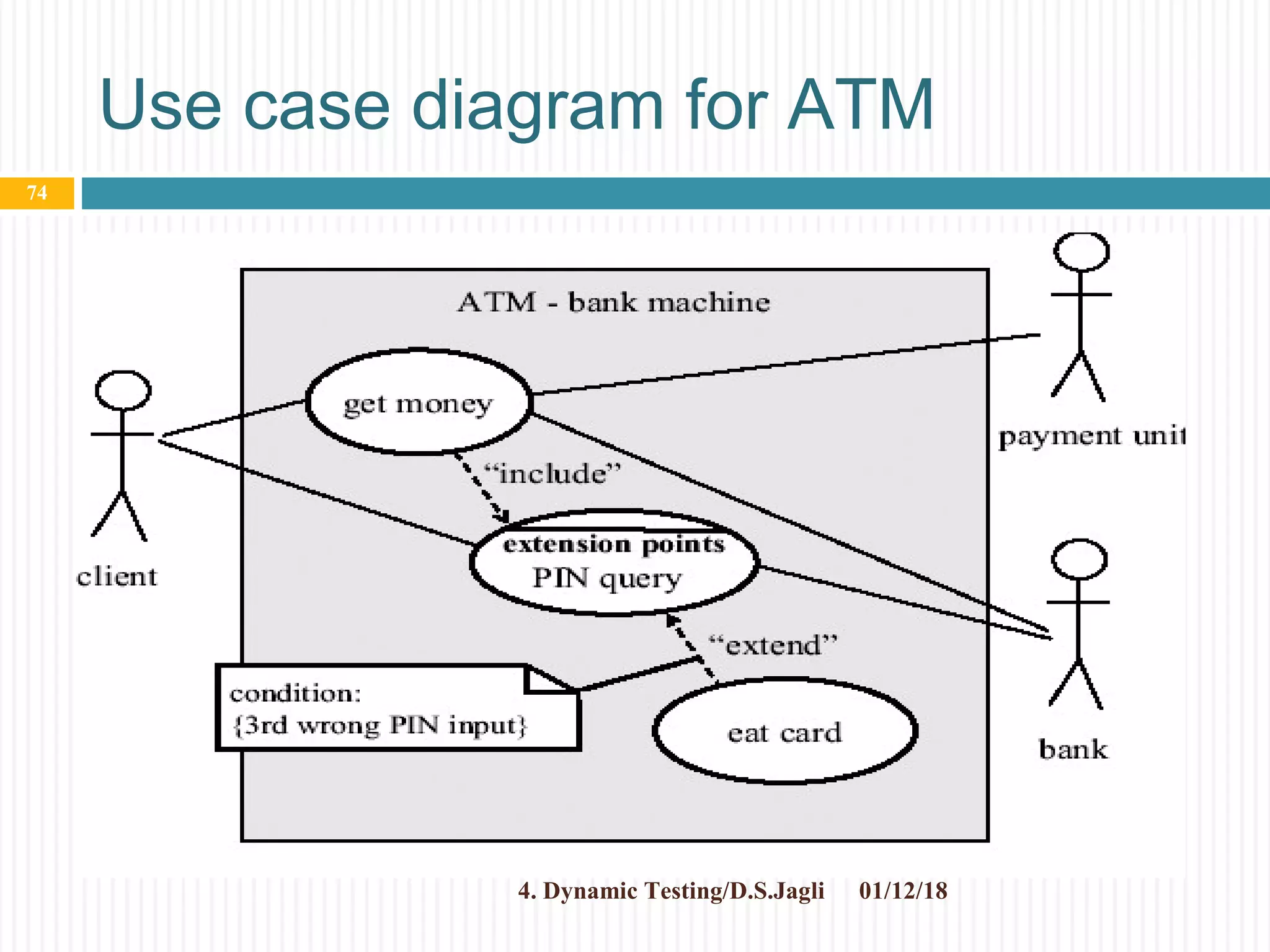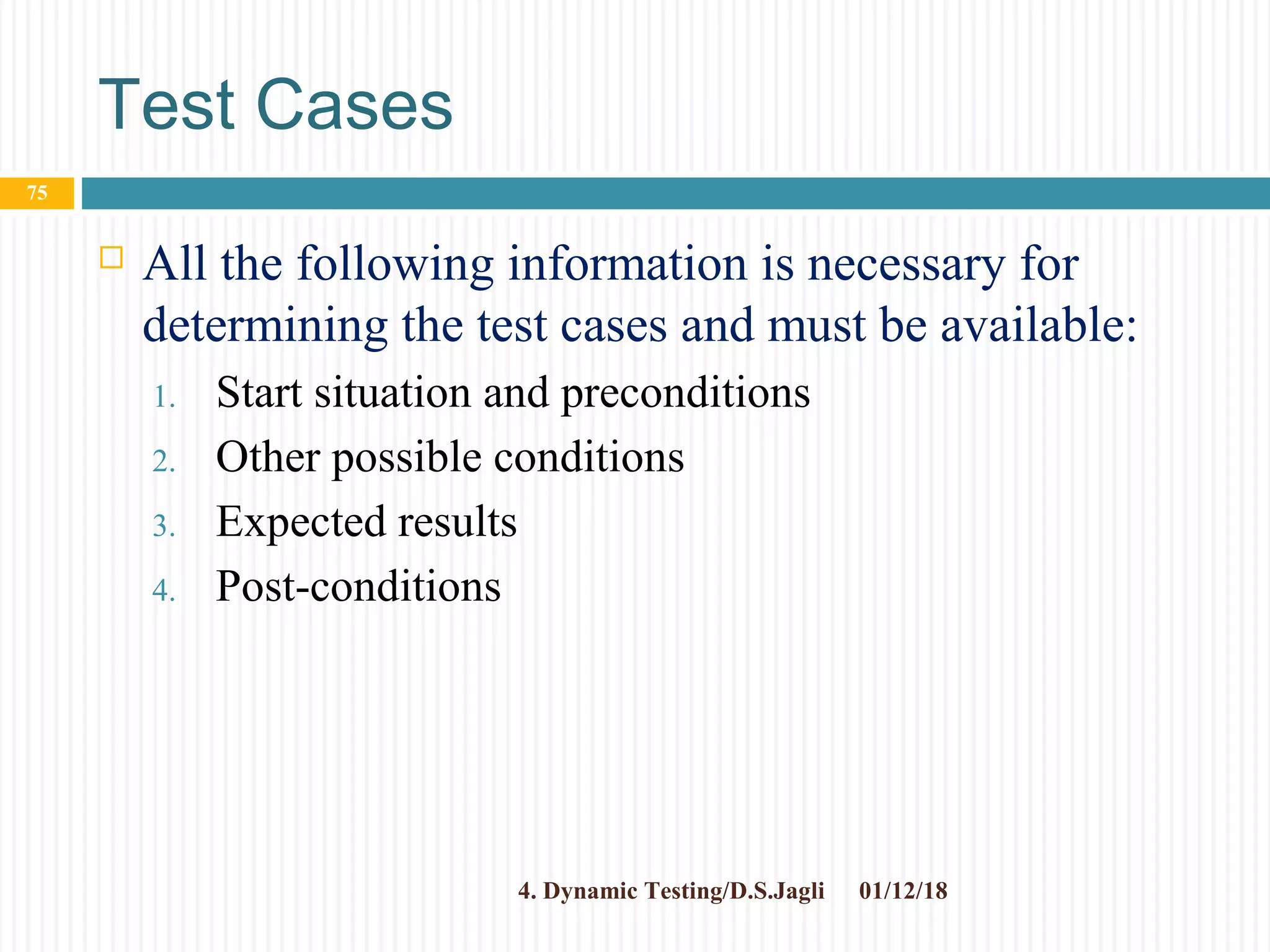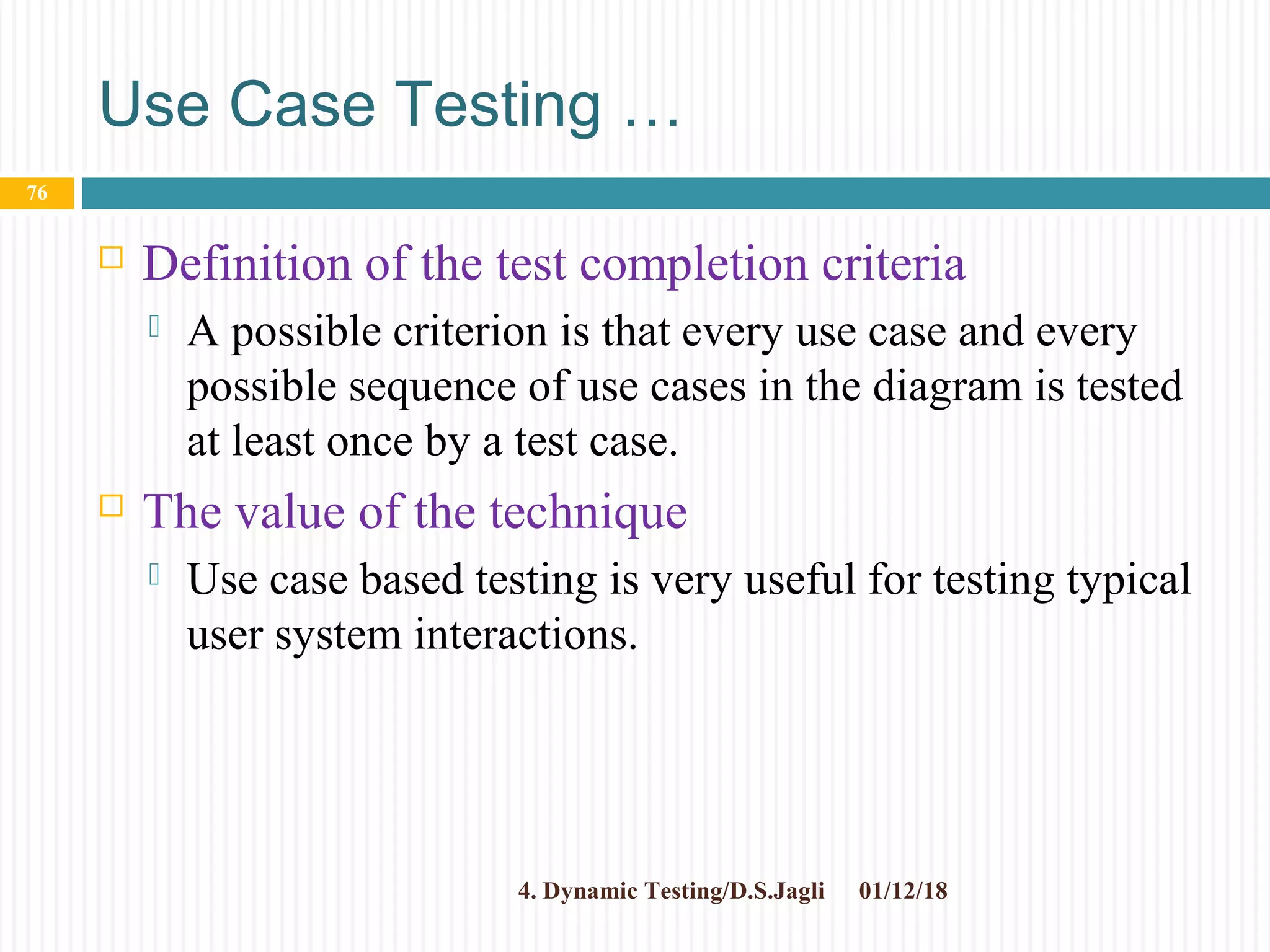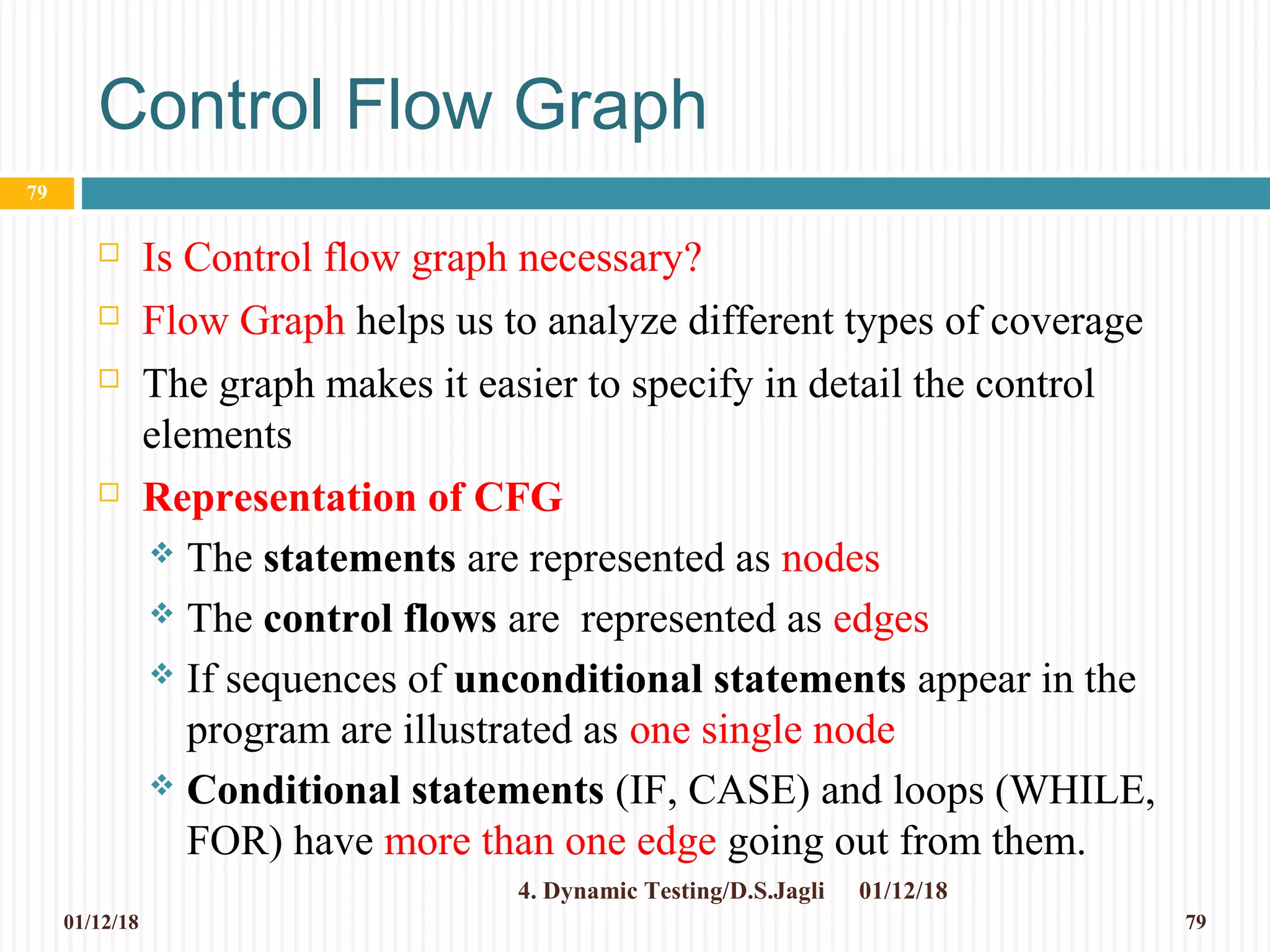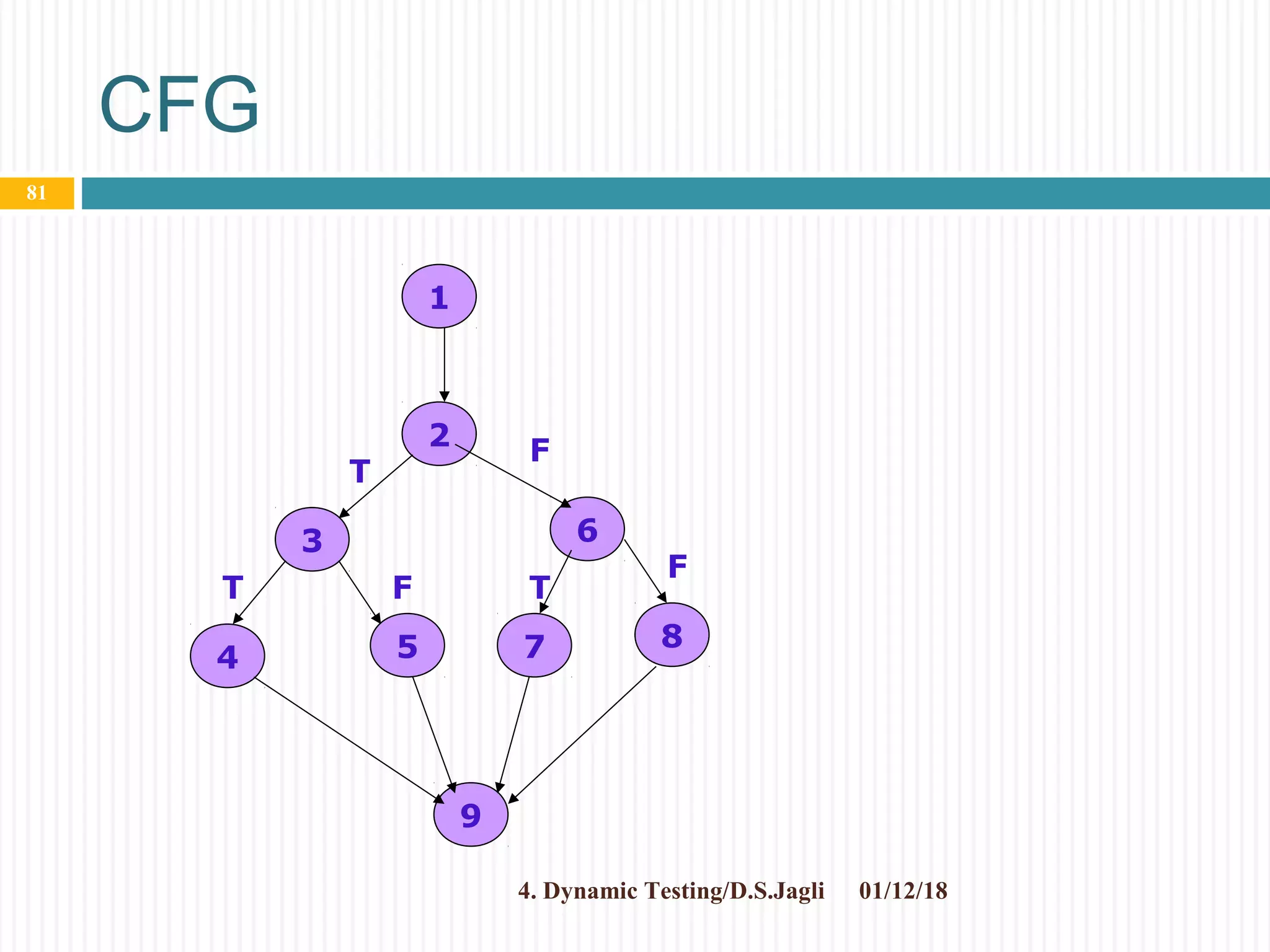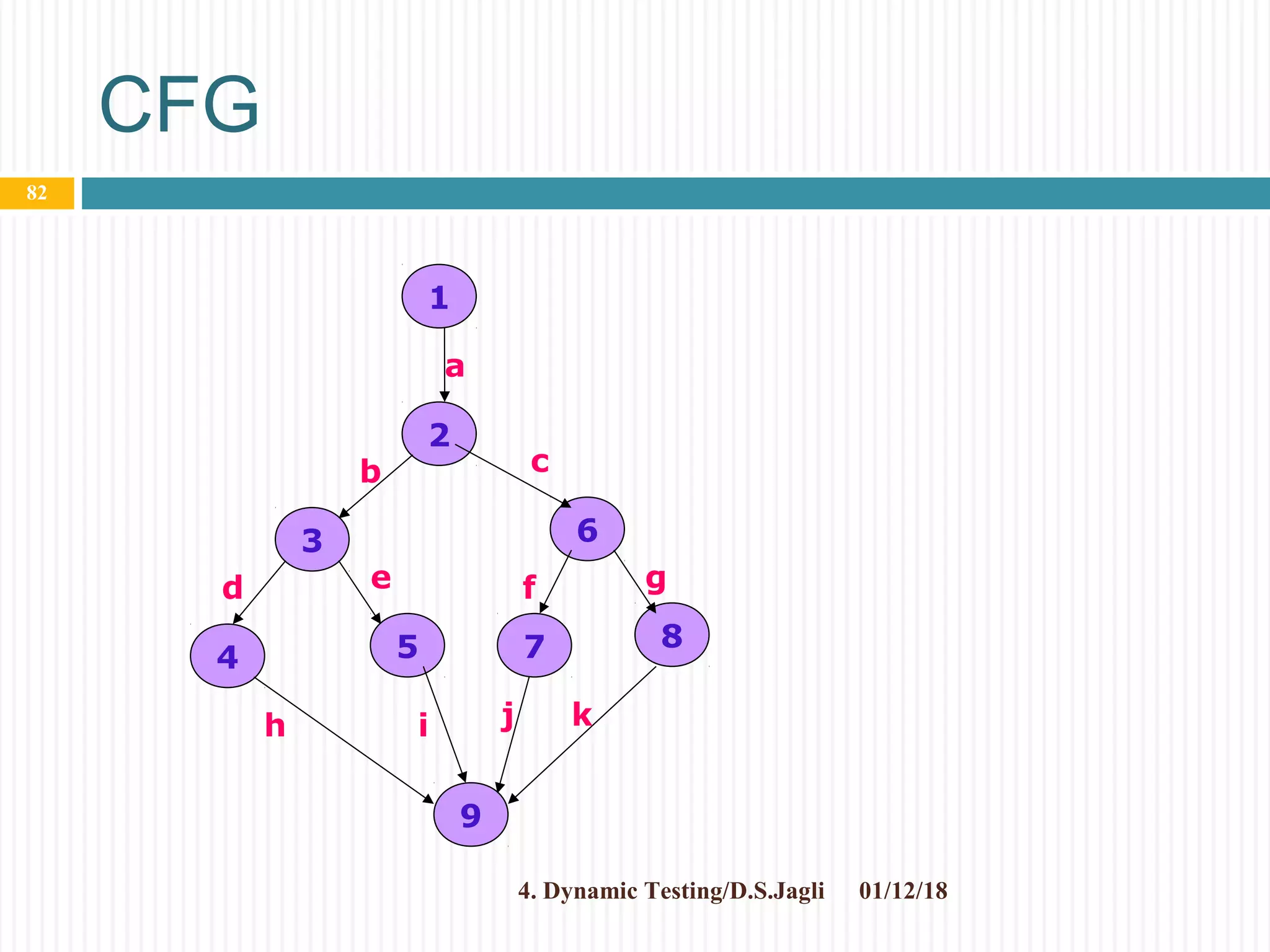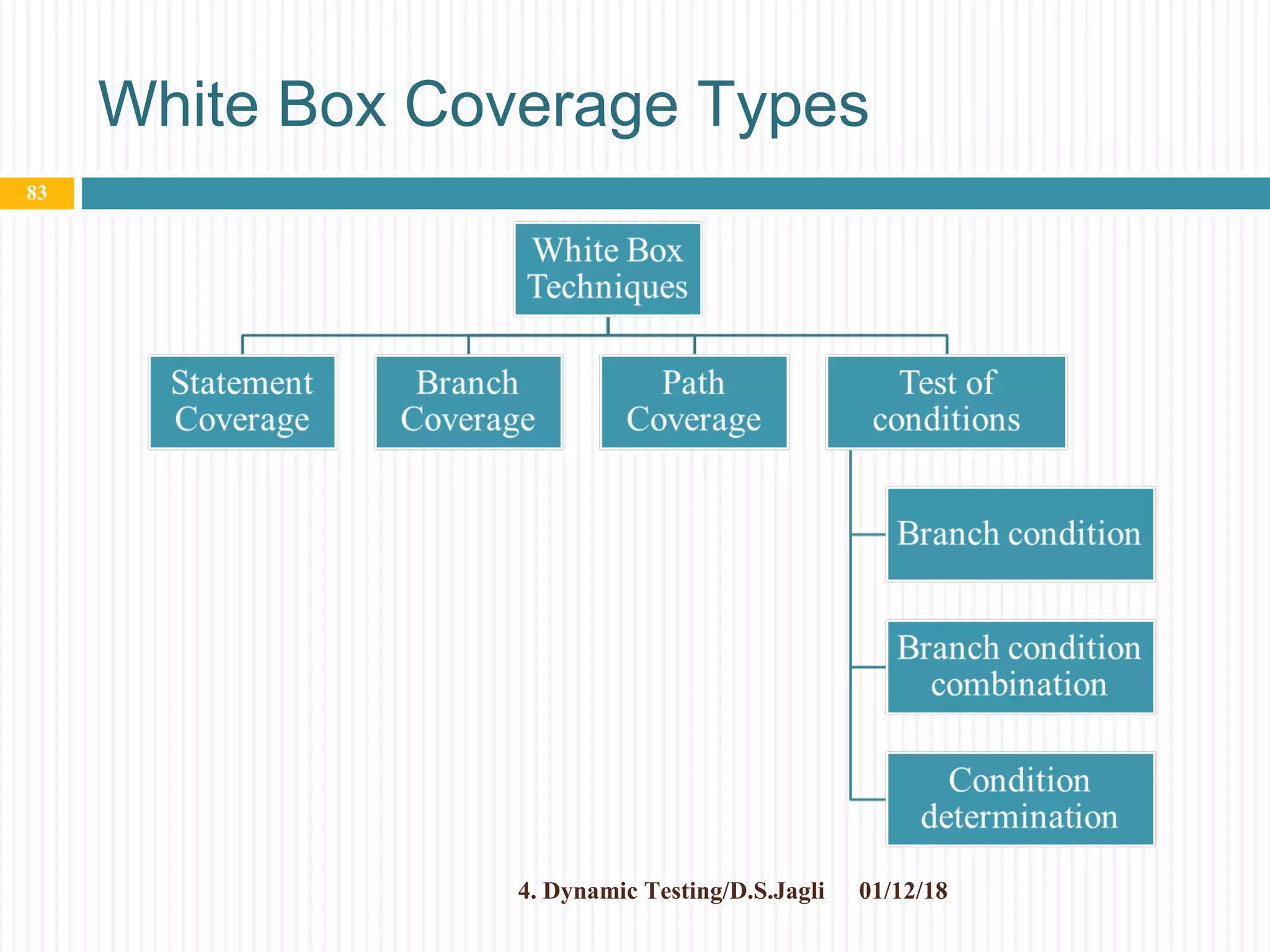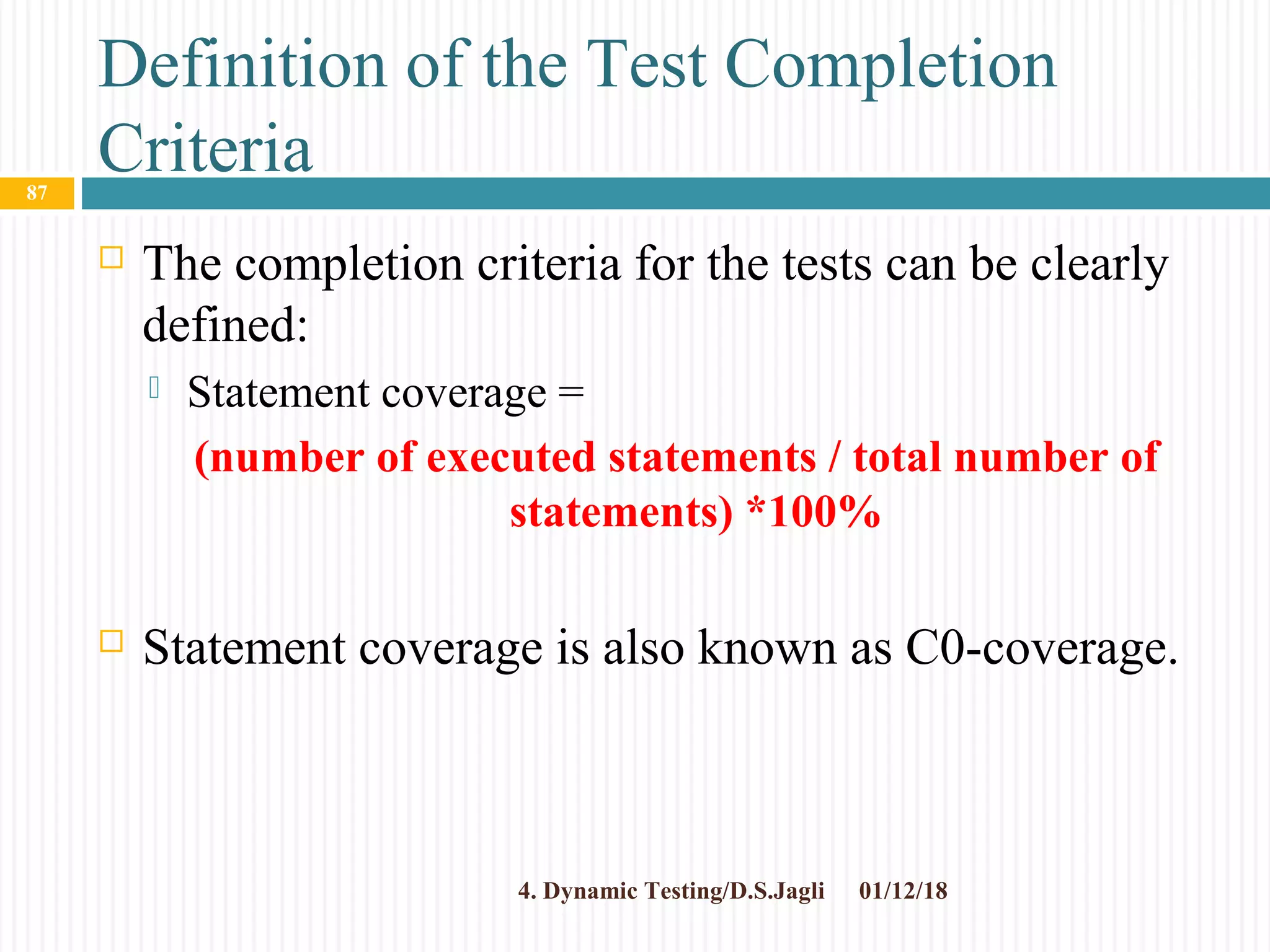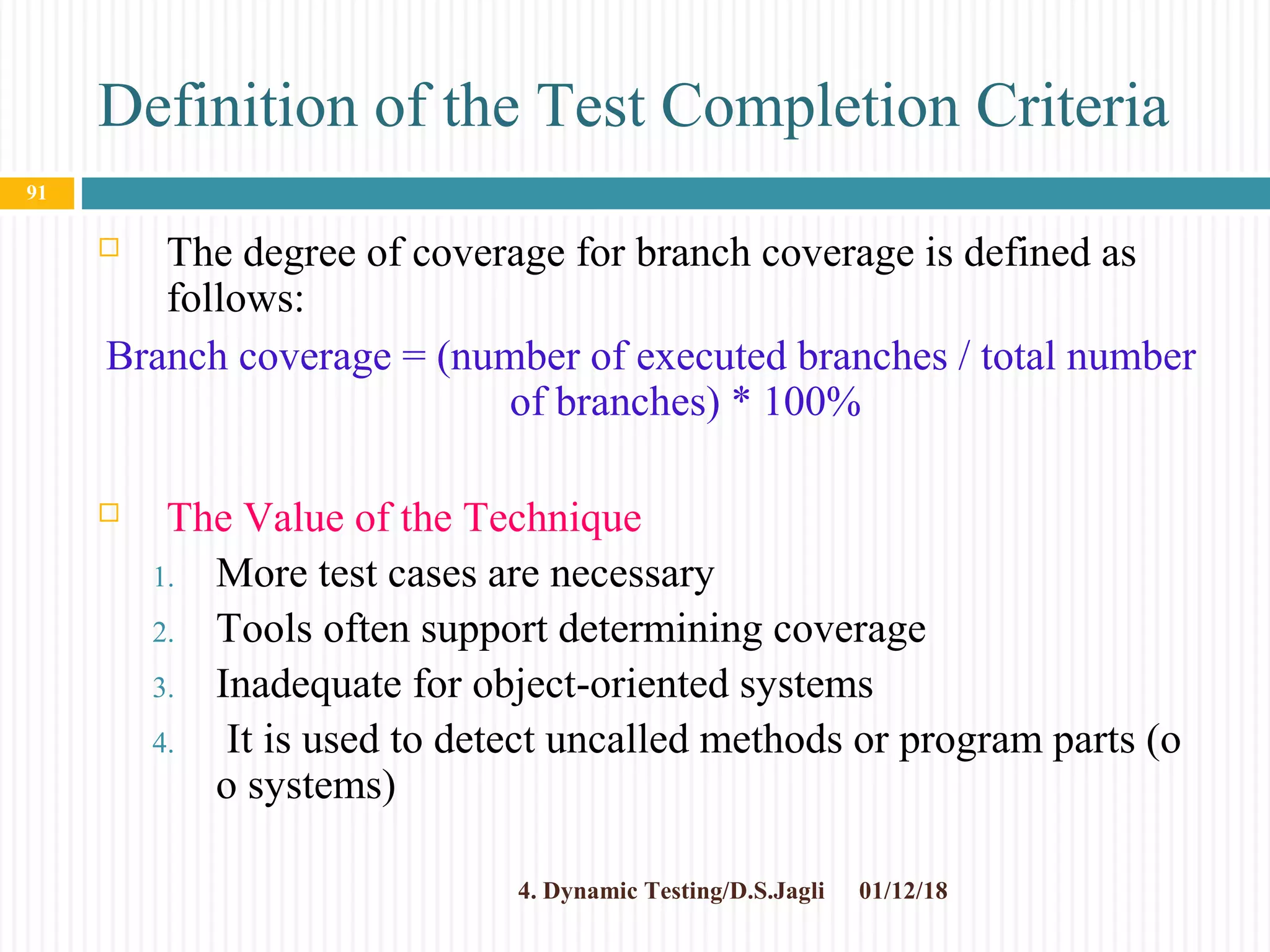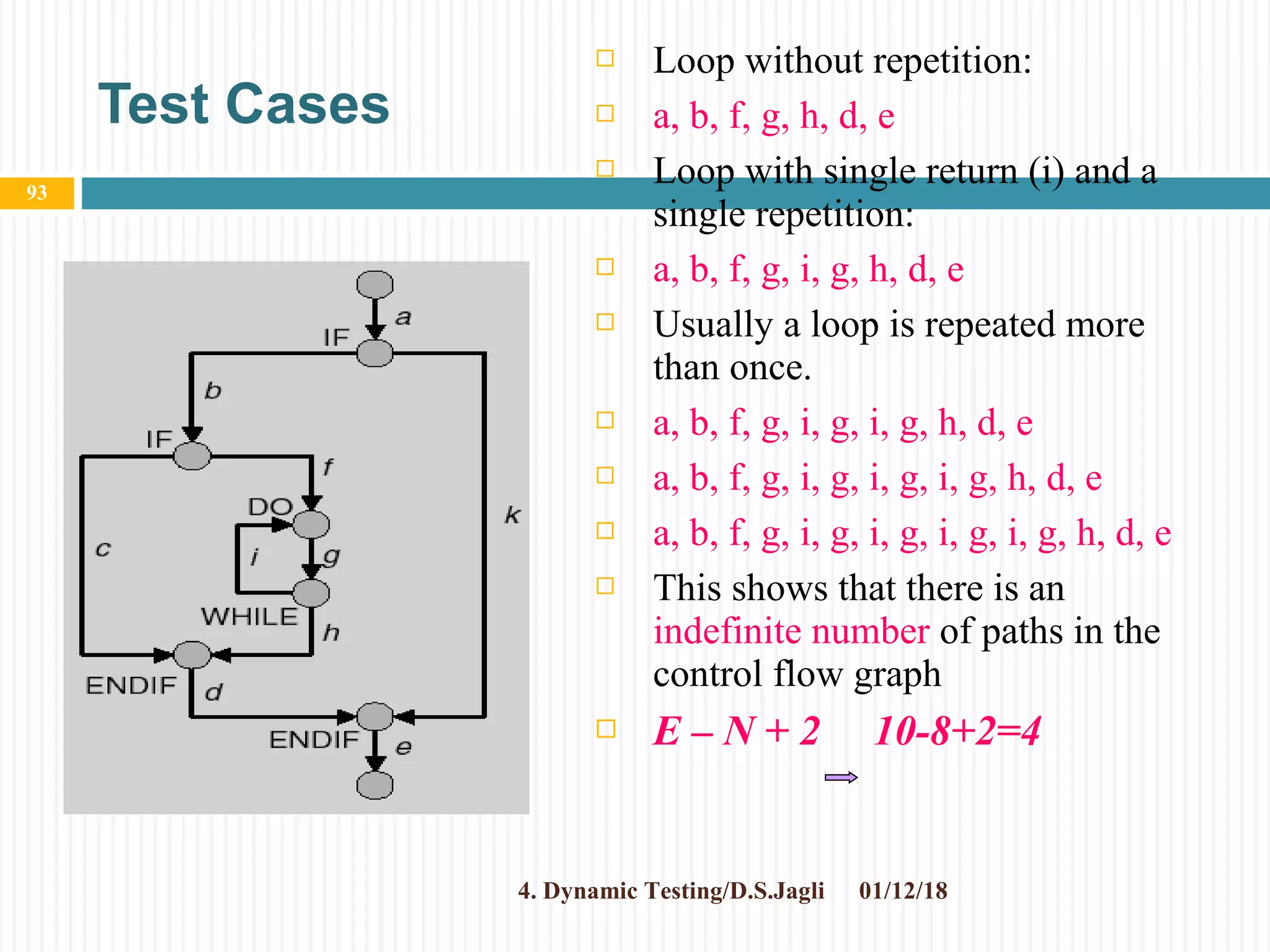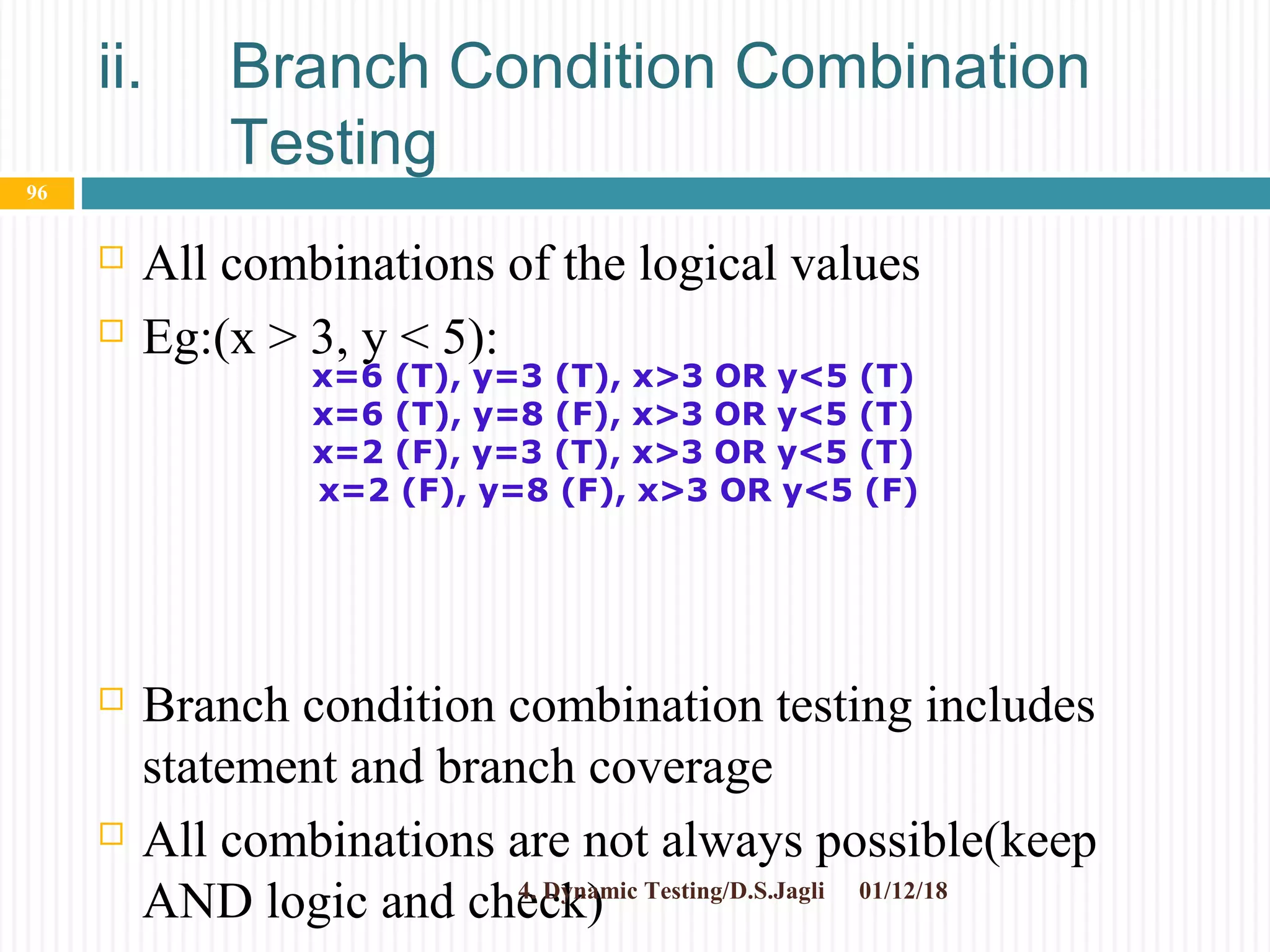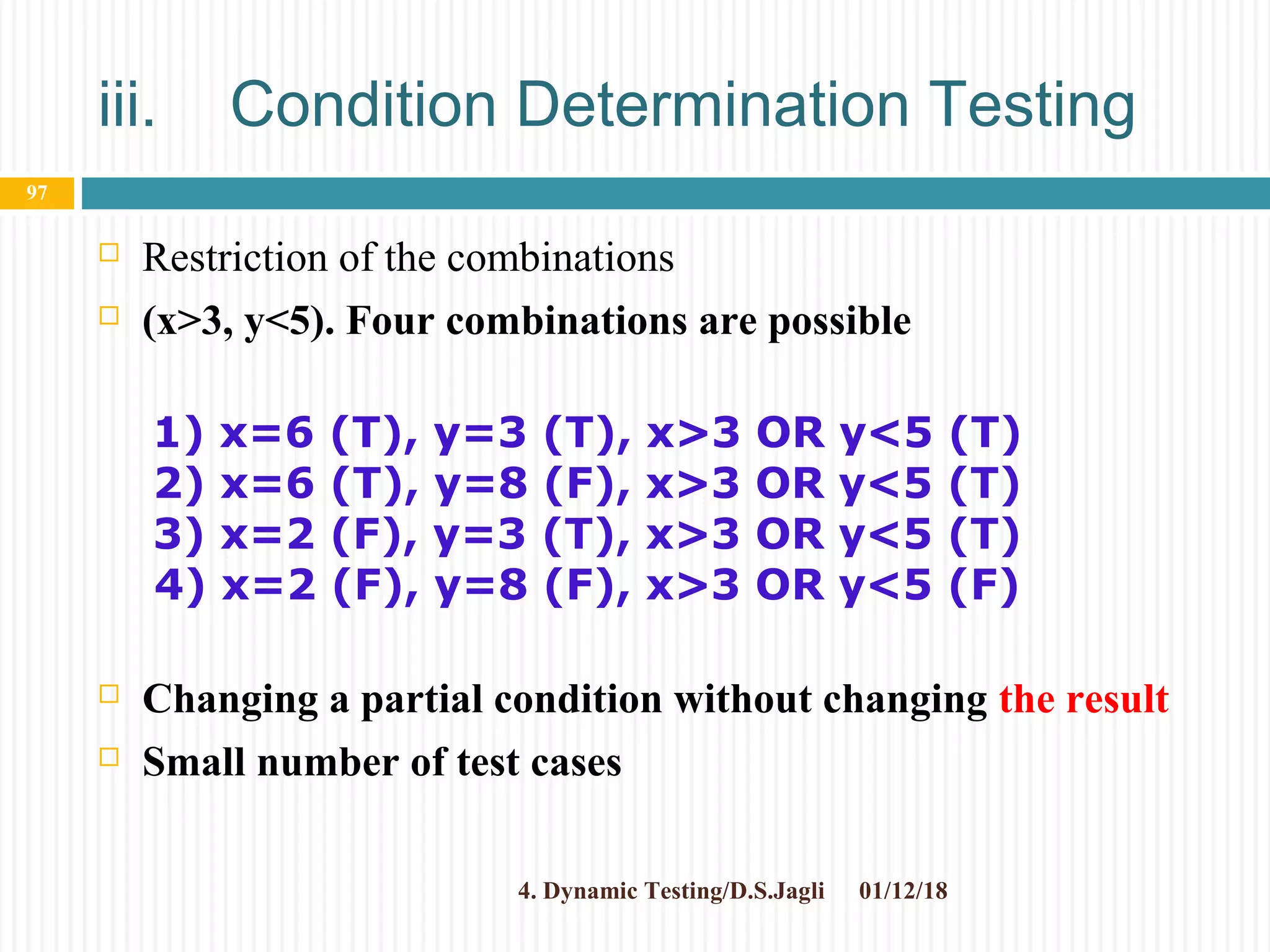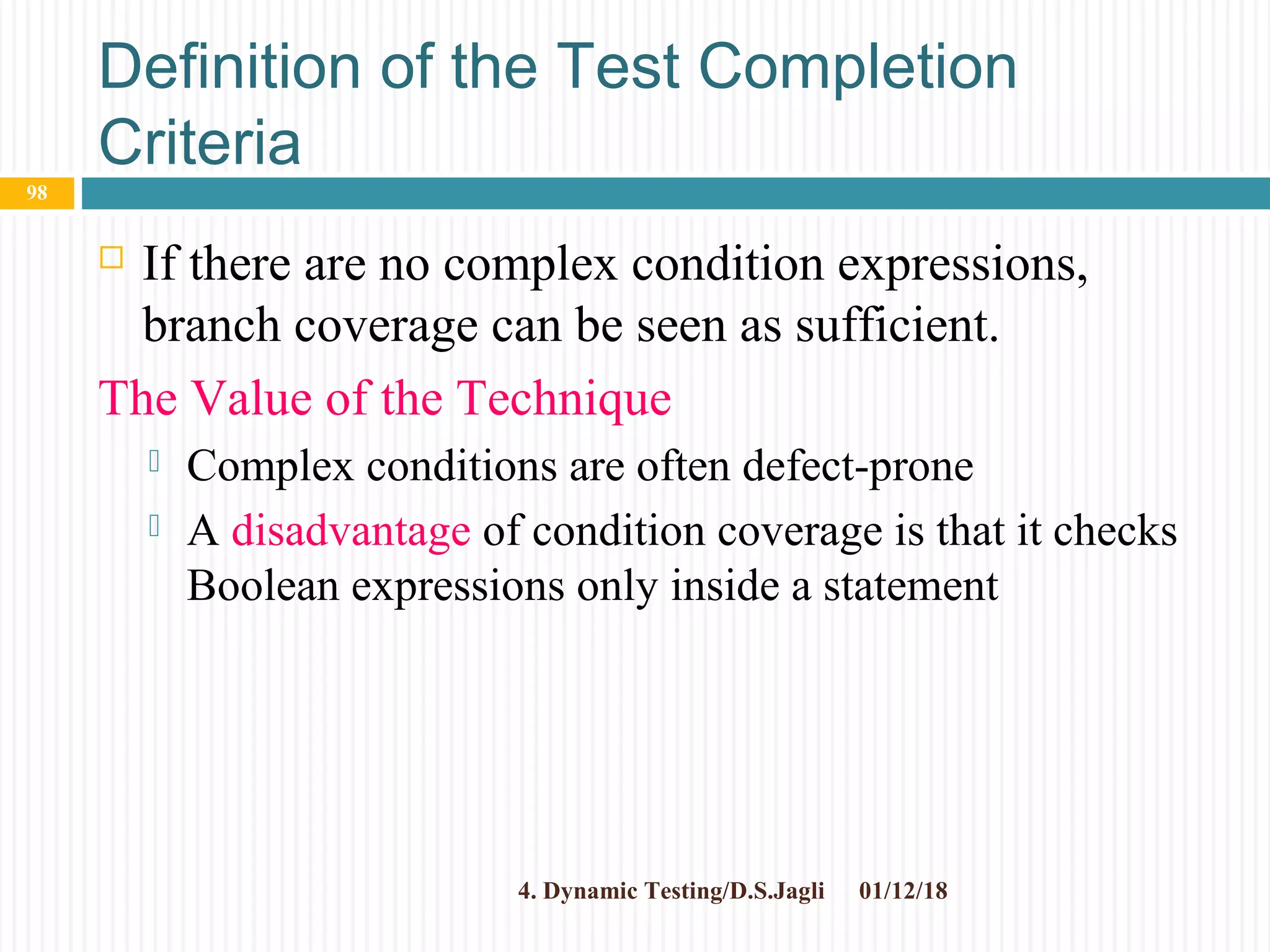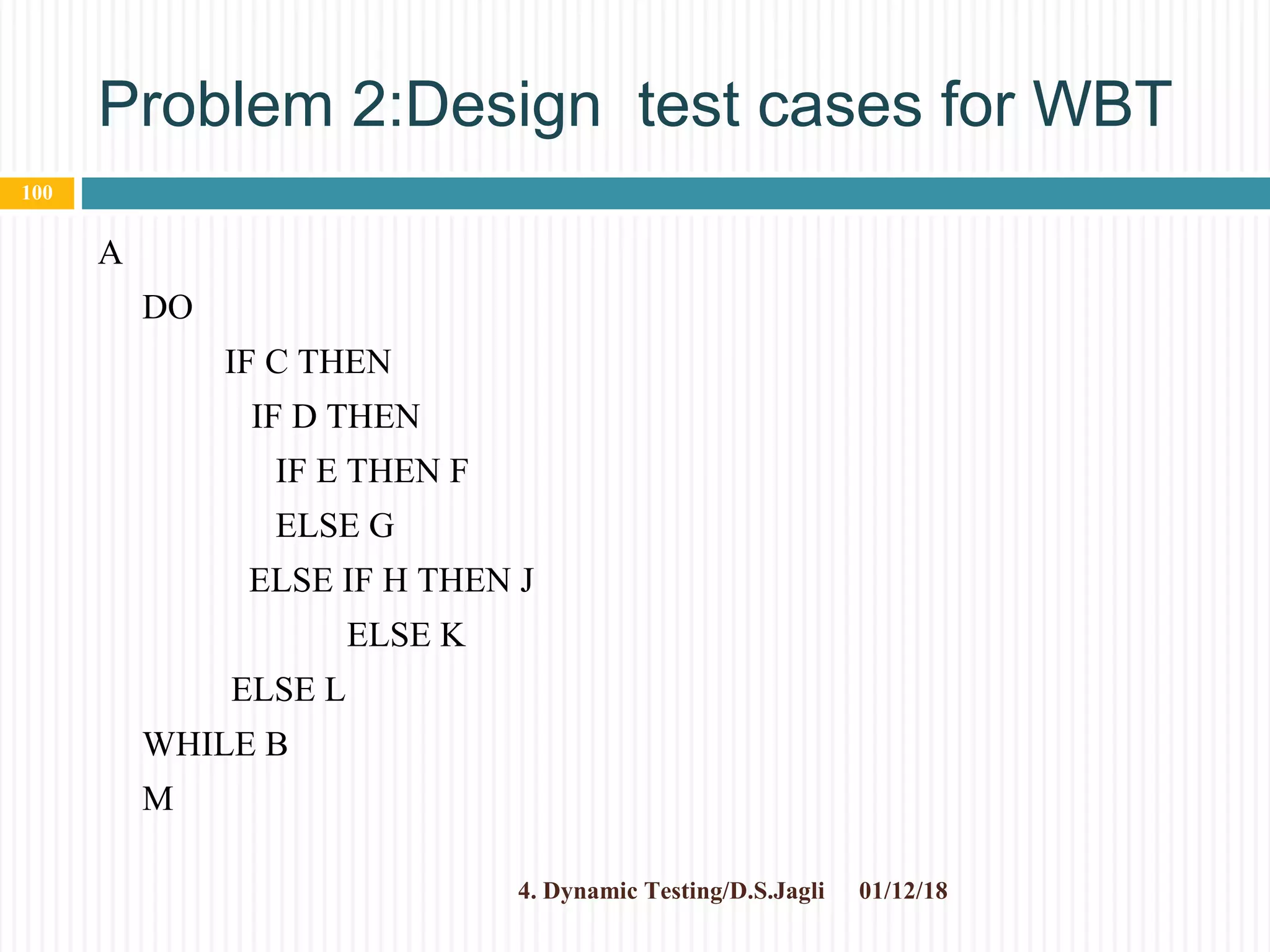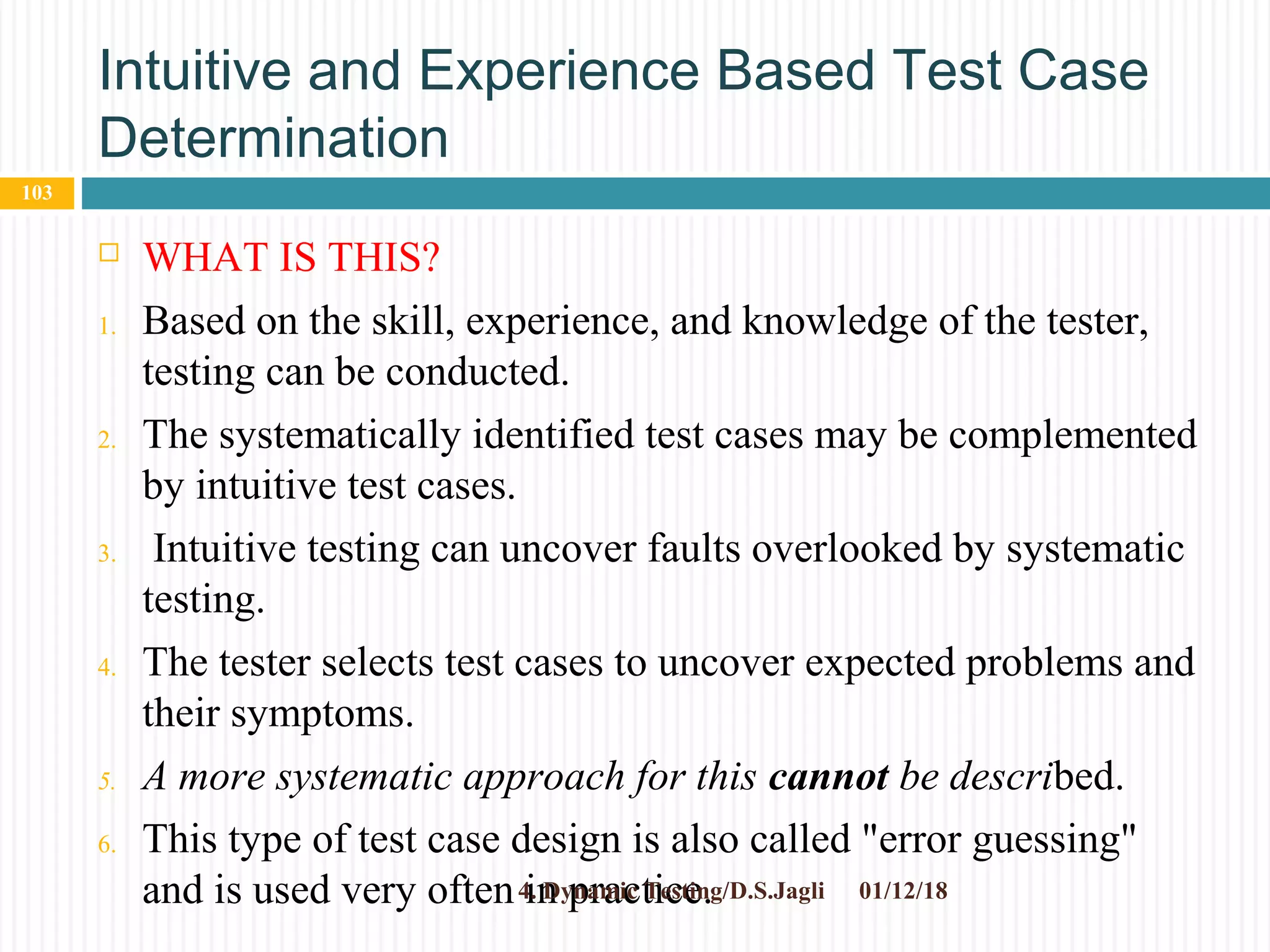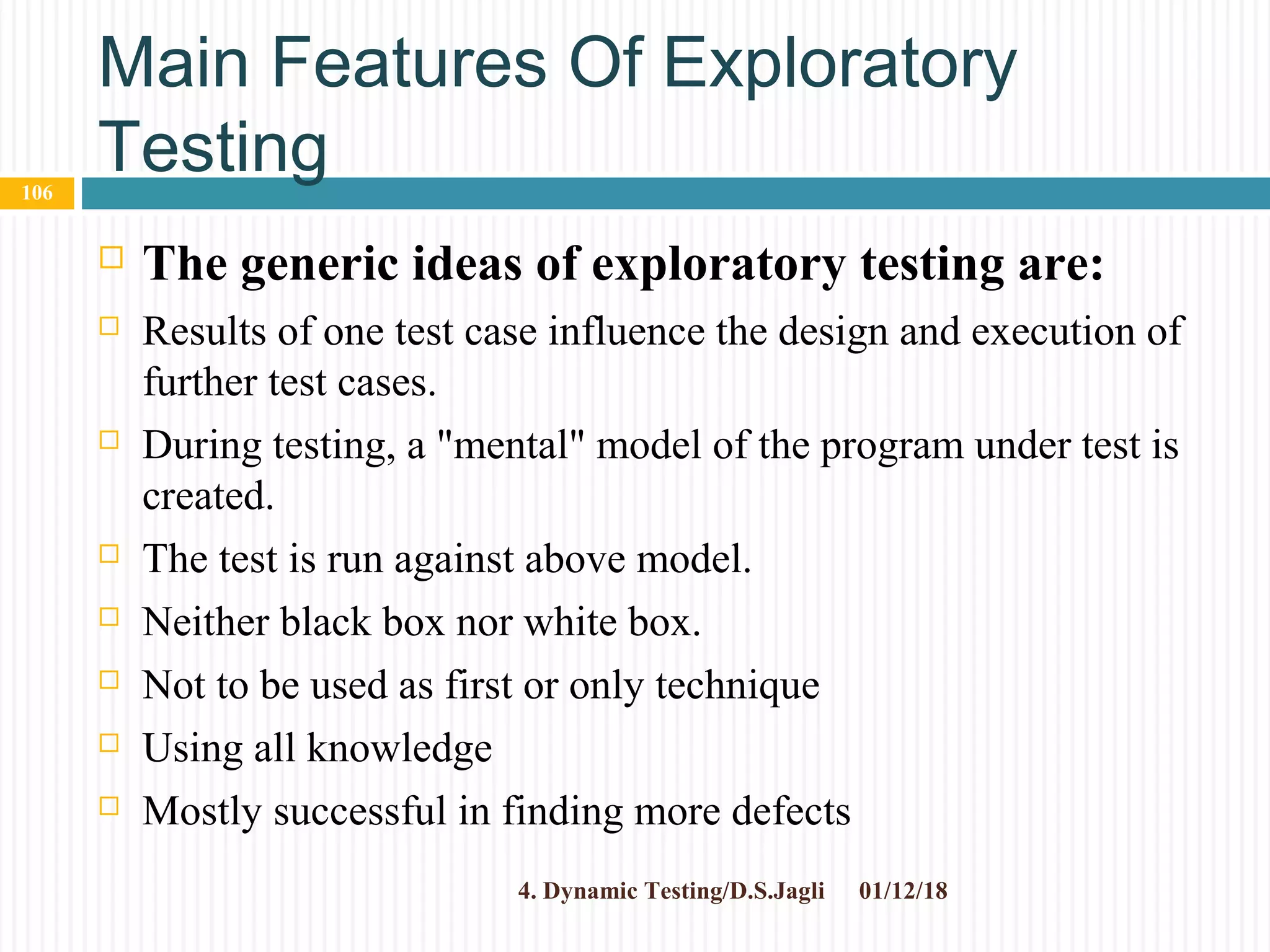The document discusses various techniques for dynamic testing of software, including black box and white box testing strategies. It covers topics like equivalence class partitioning, boundary value analysis, state transition testing, and cause-effect graphing. The key steps of dynamic testing are outlined as testing software by execution, determining test cases systematically, and defining test exit criteria. Black box testing techniques are derived from specifications to test functionality without considering internal structure, while white box testing uses source code and internal processing.
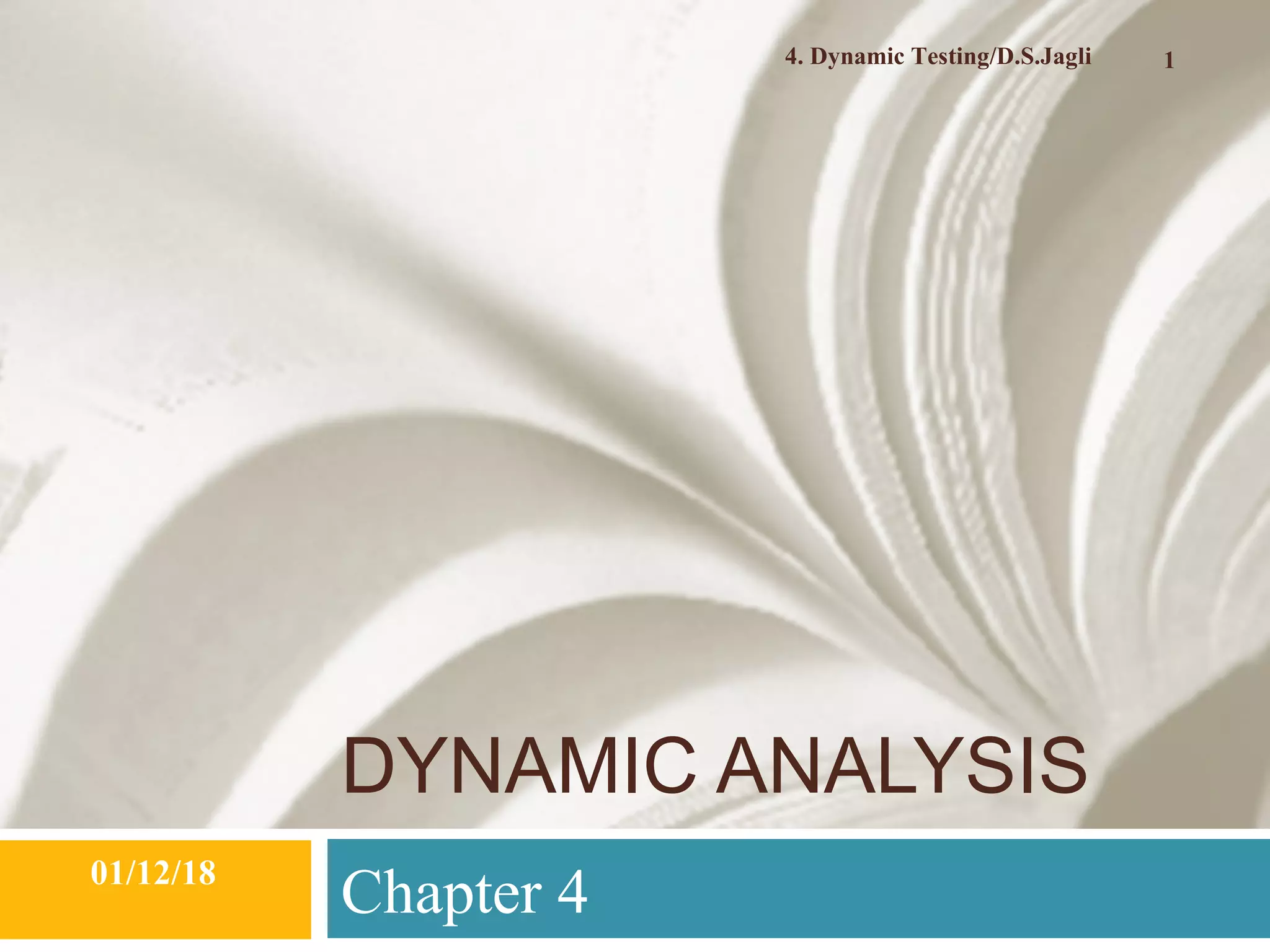
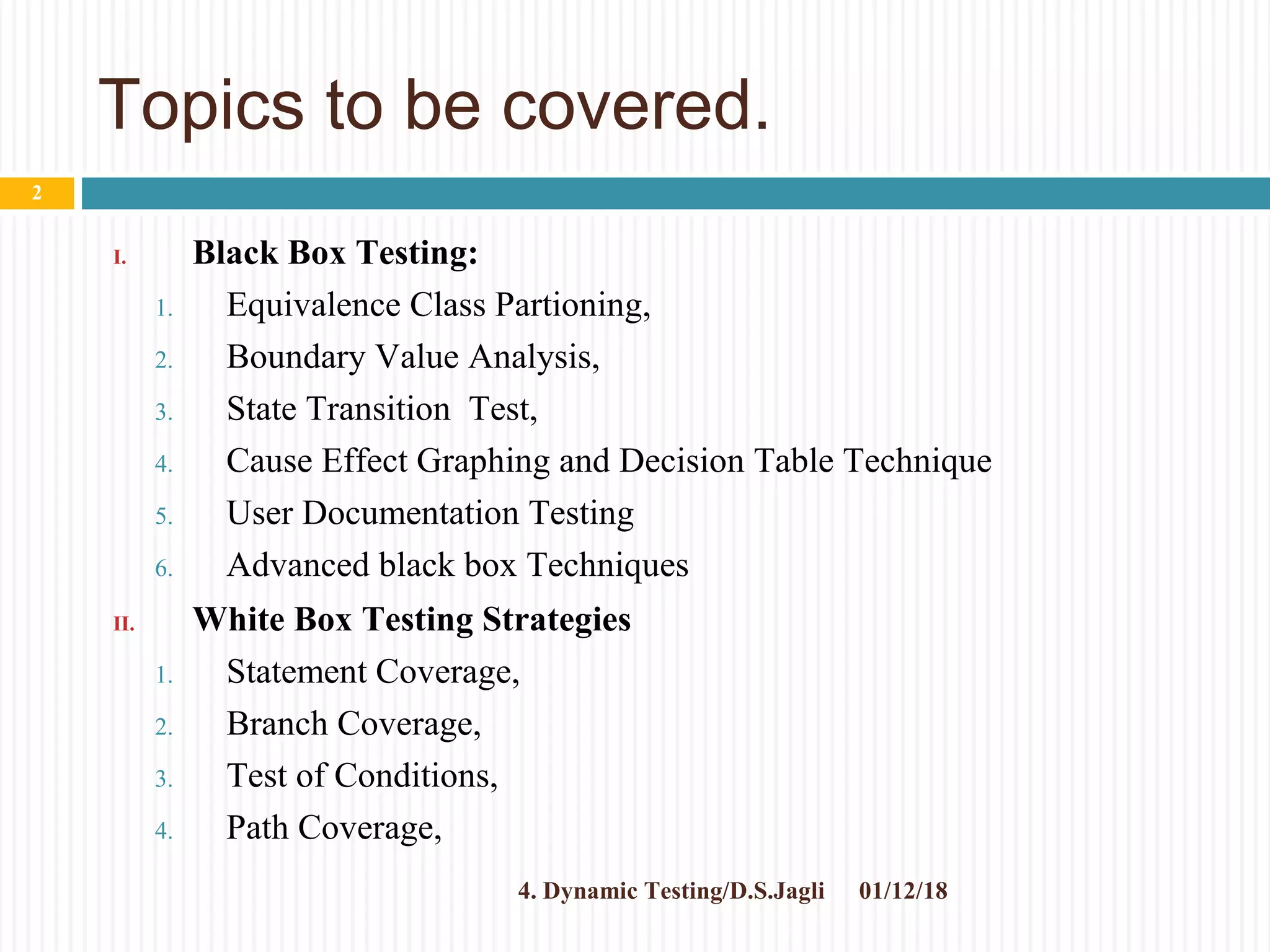
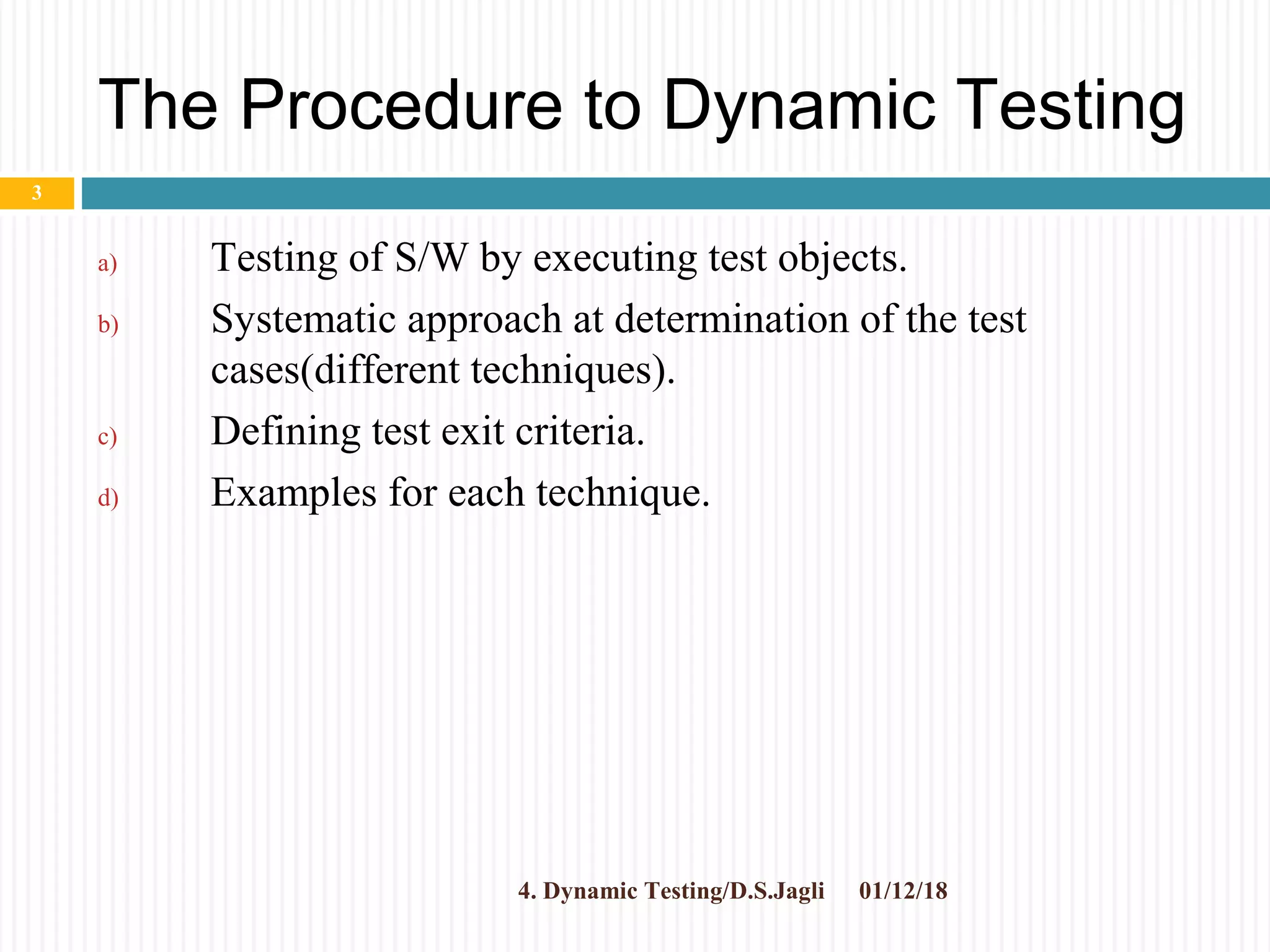
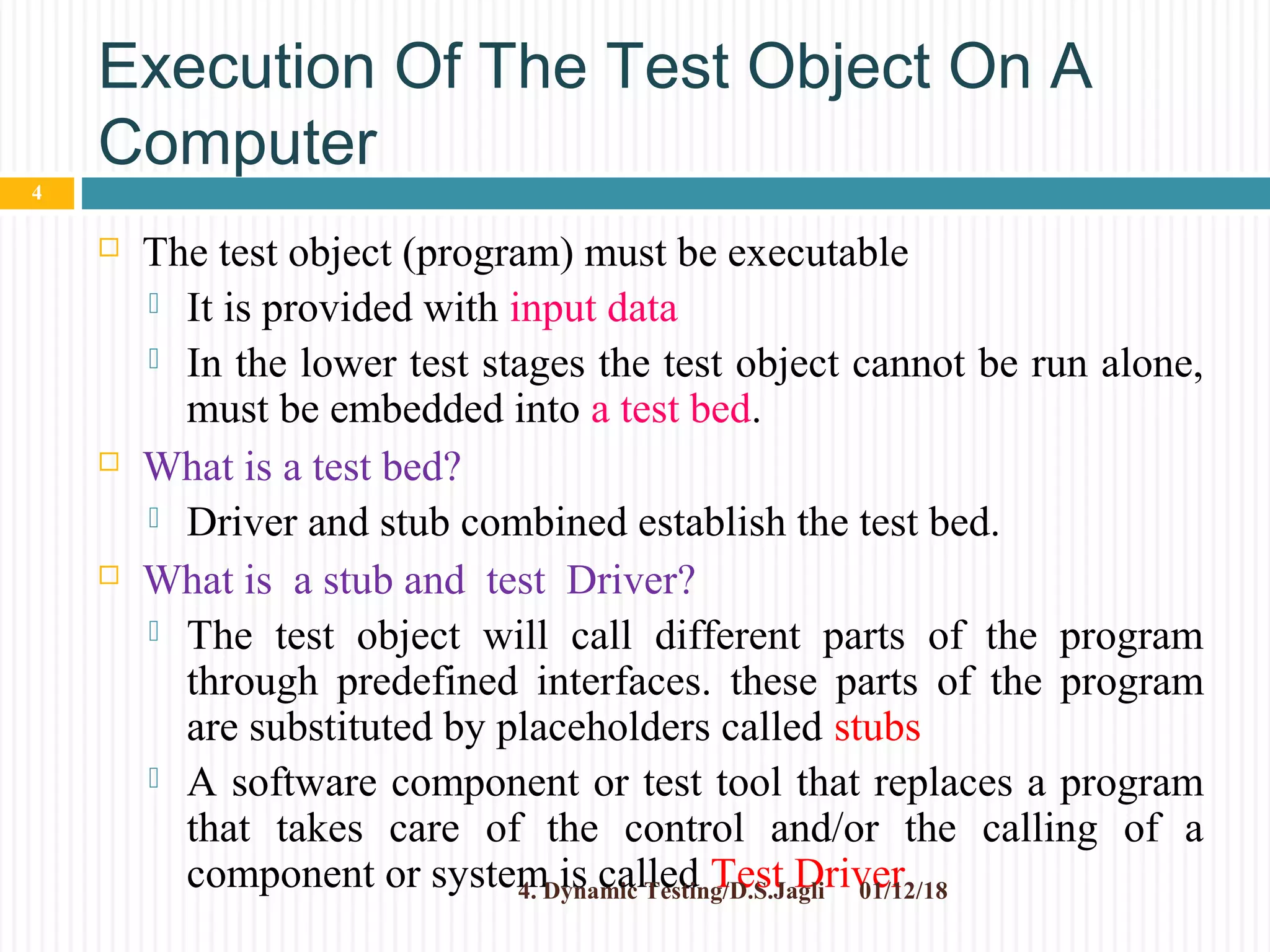
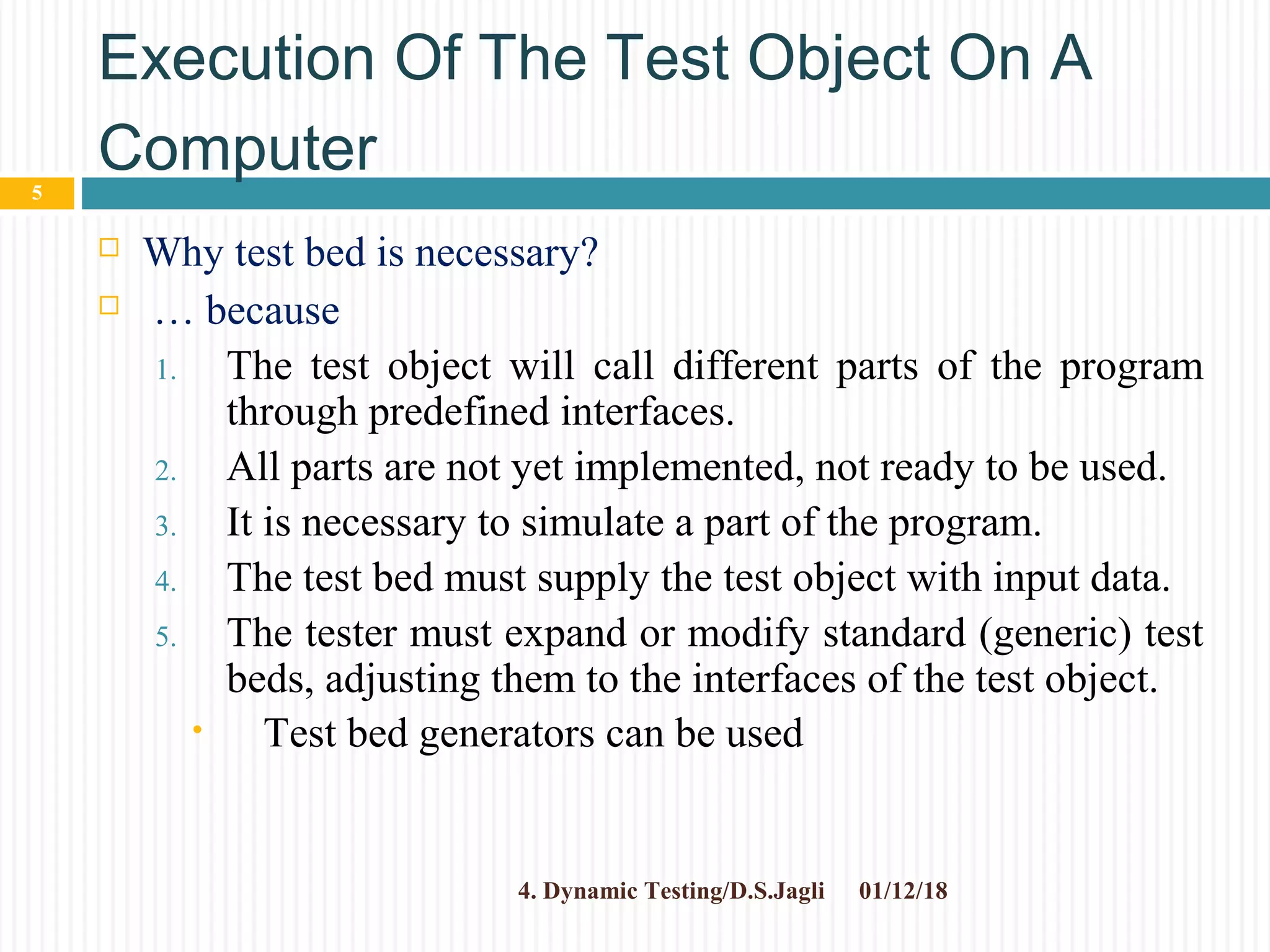
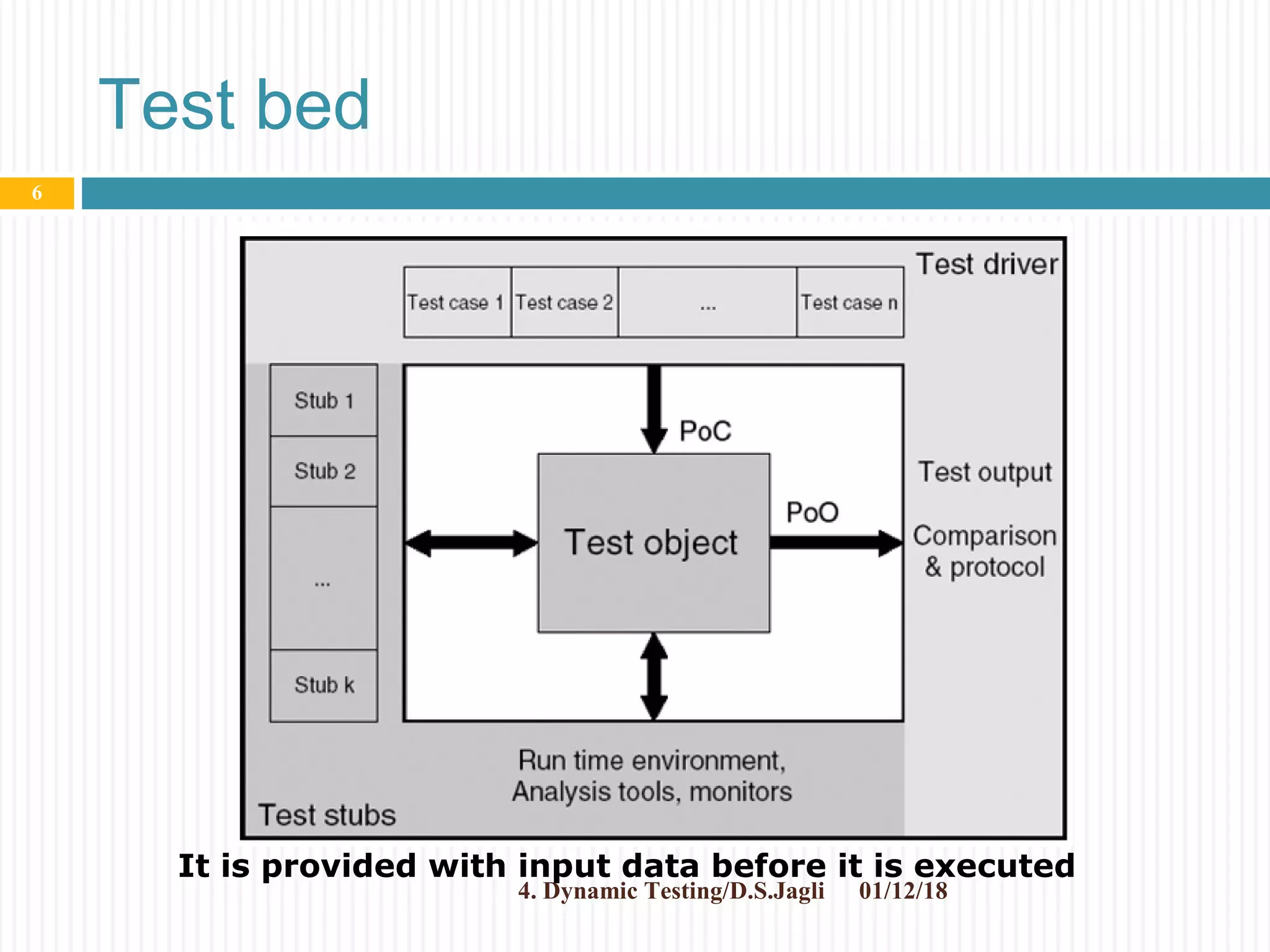
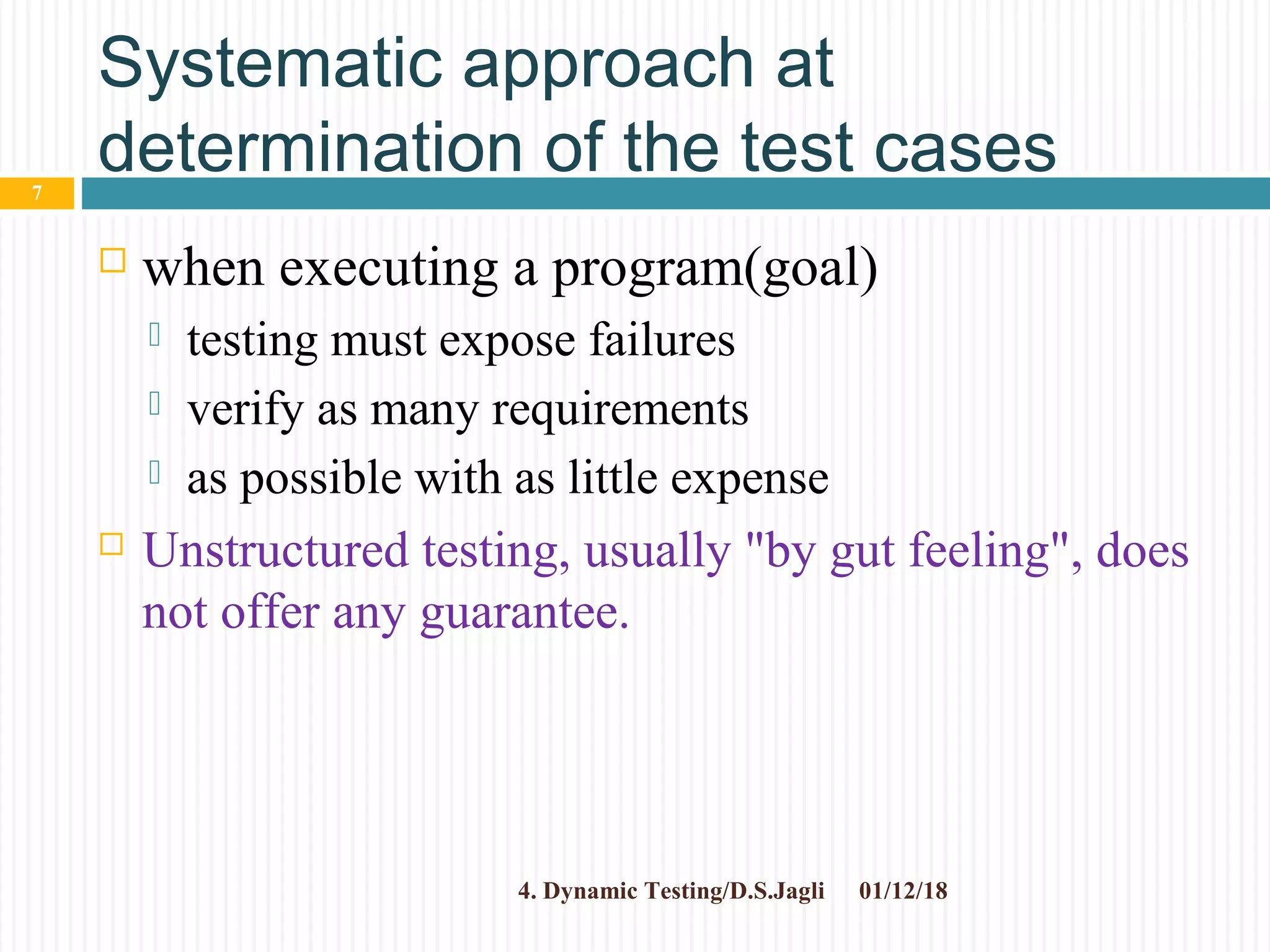
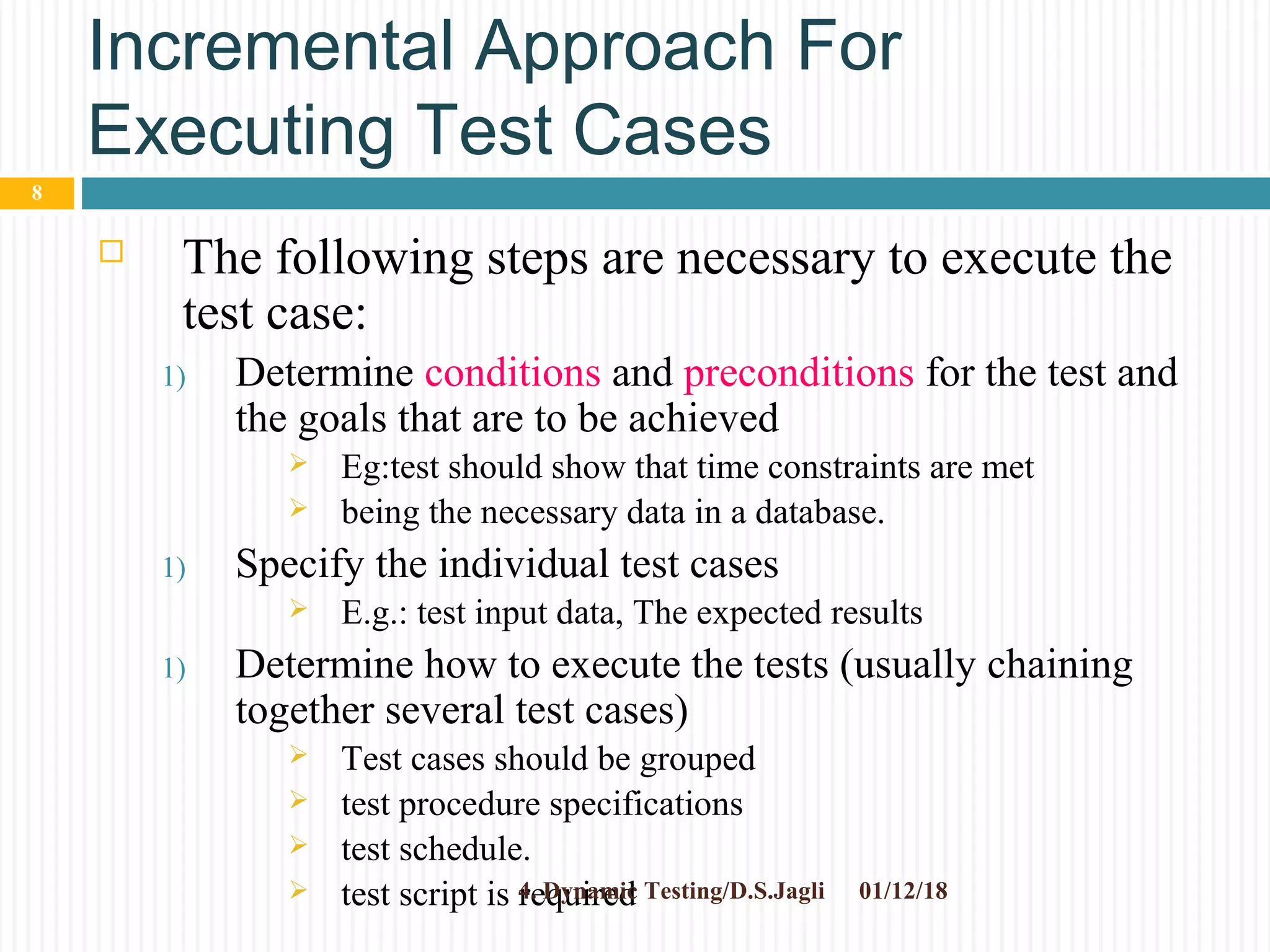
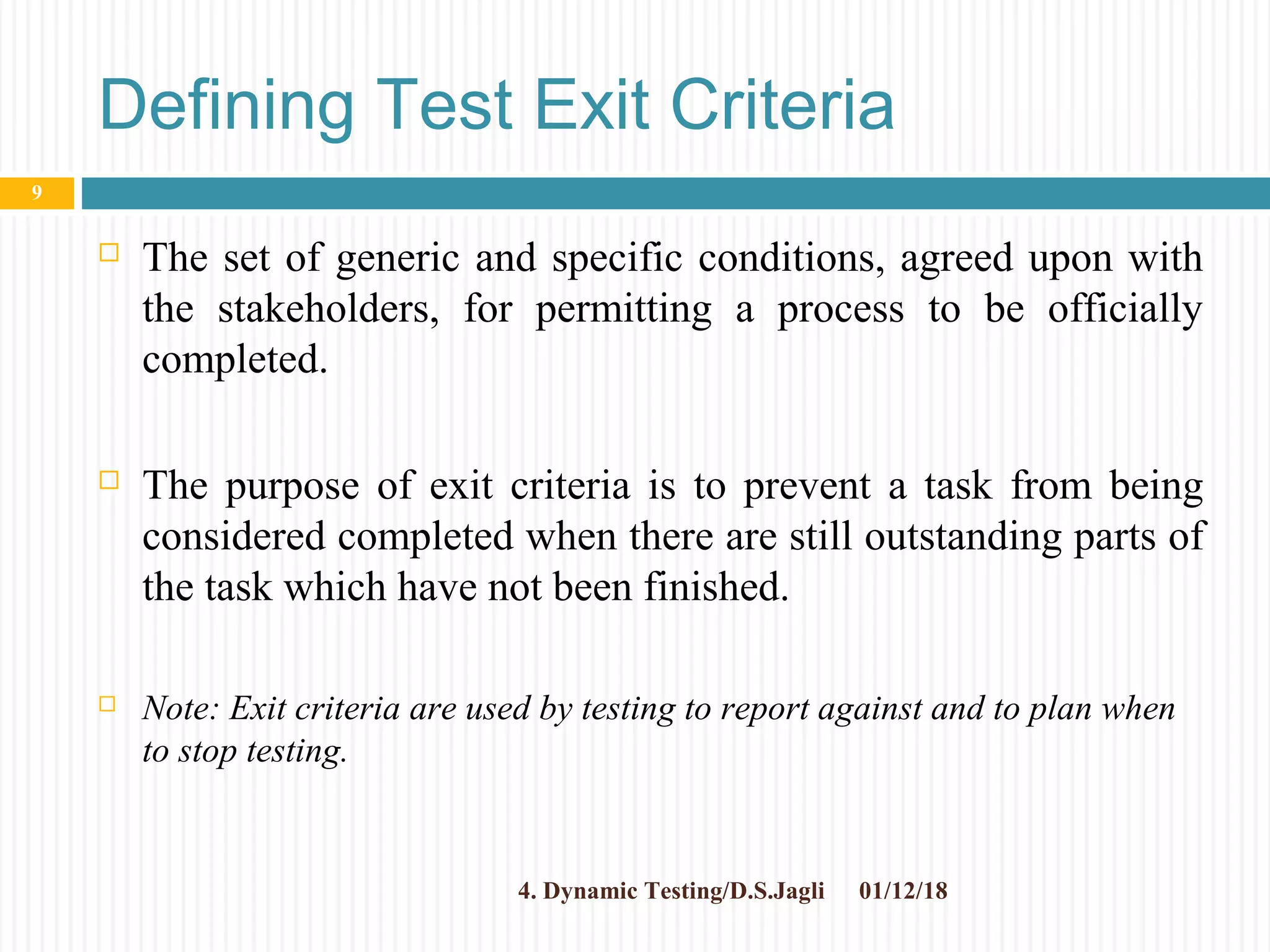
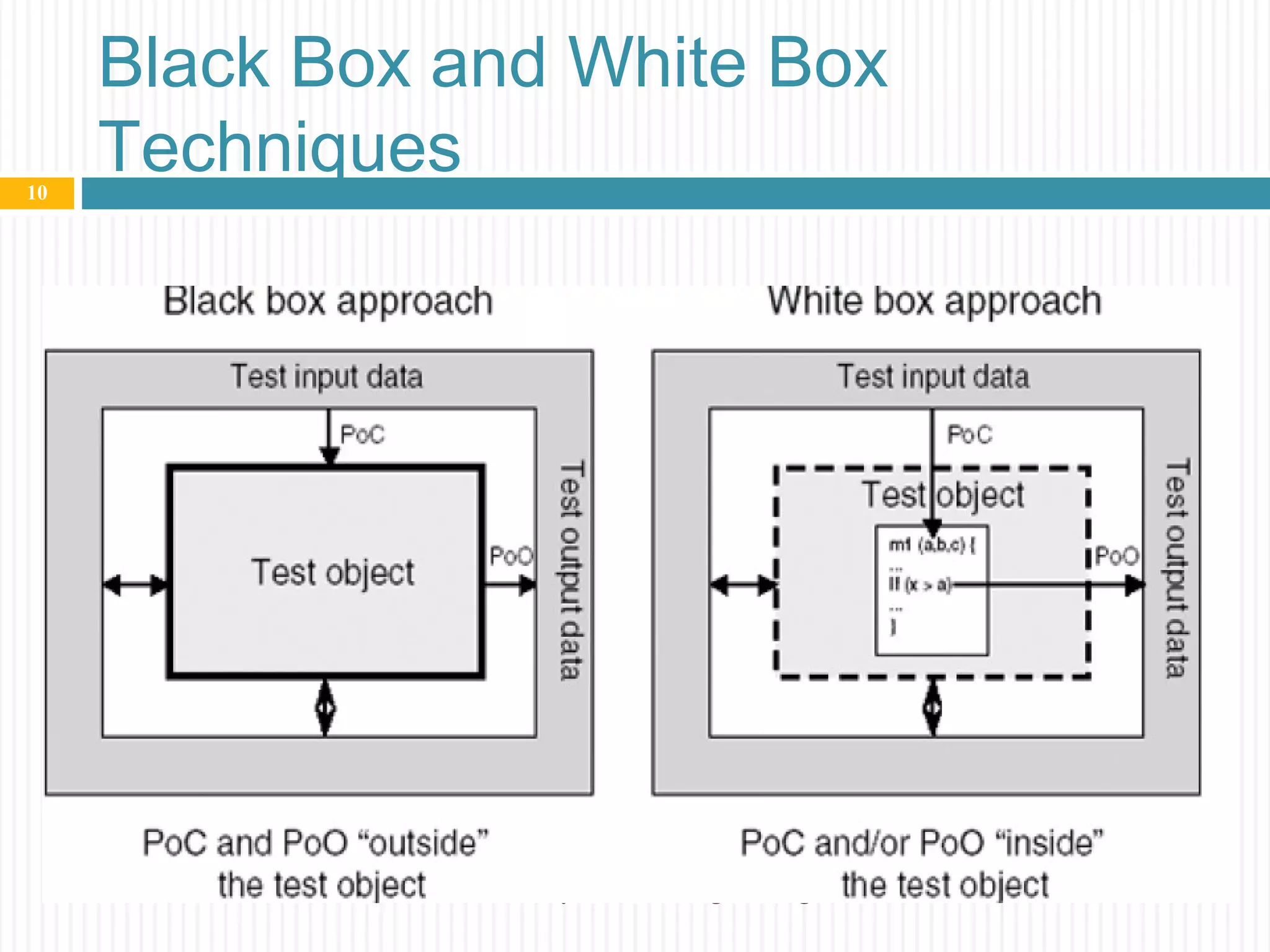
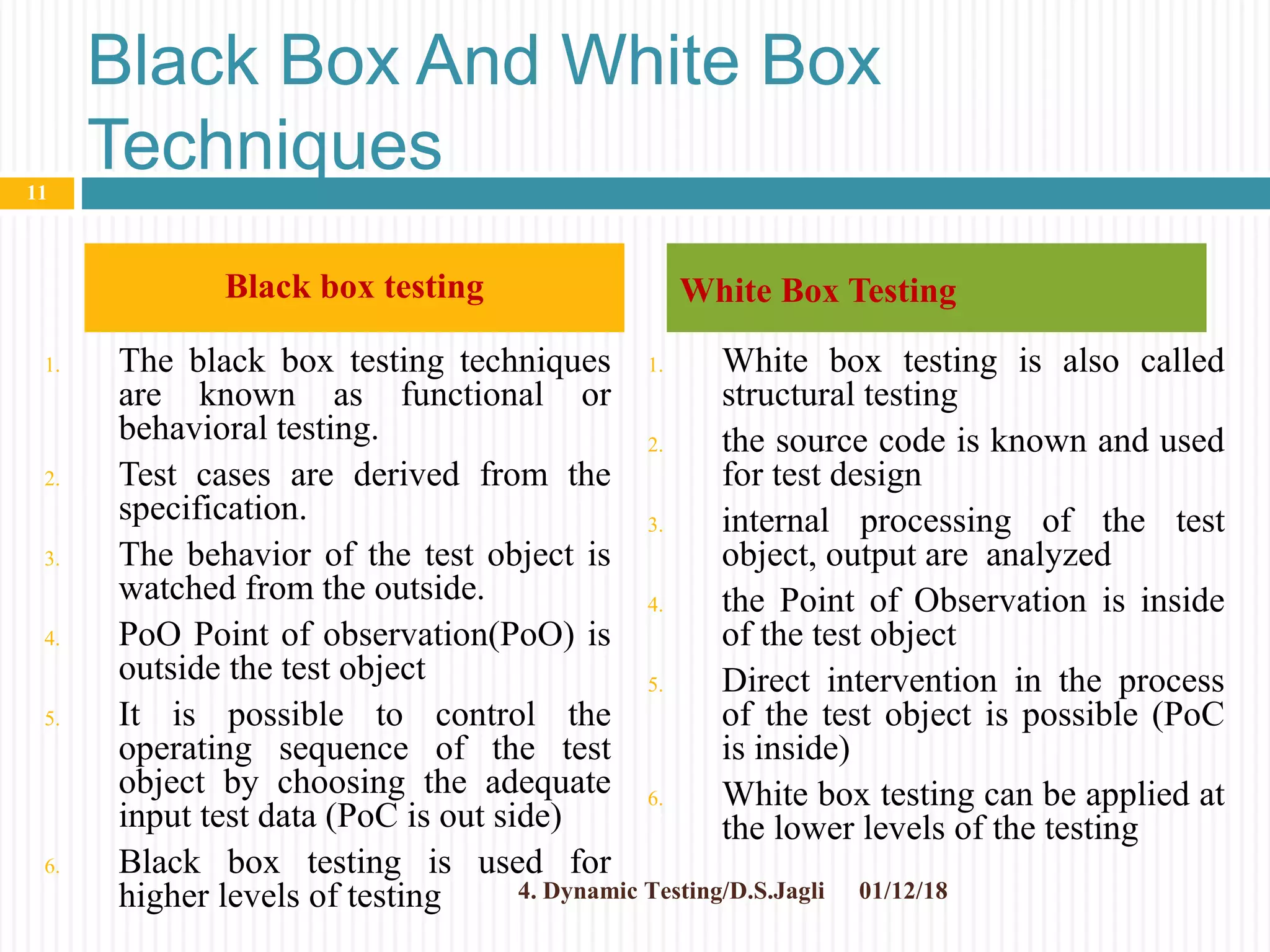
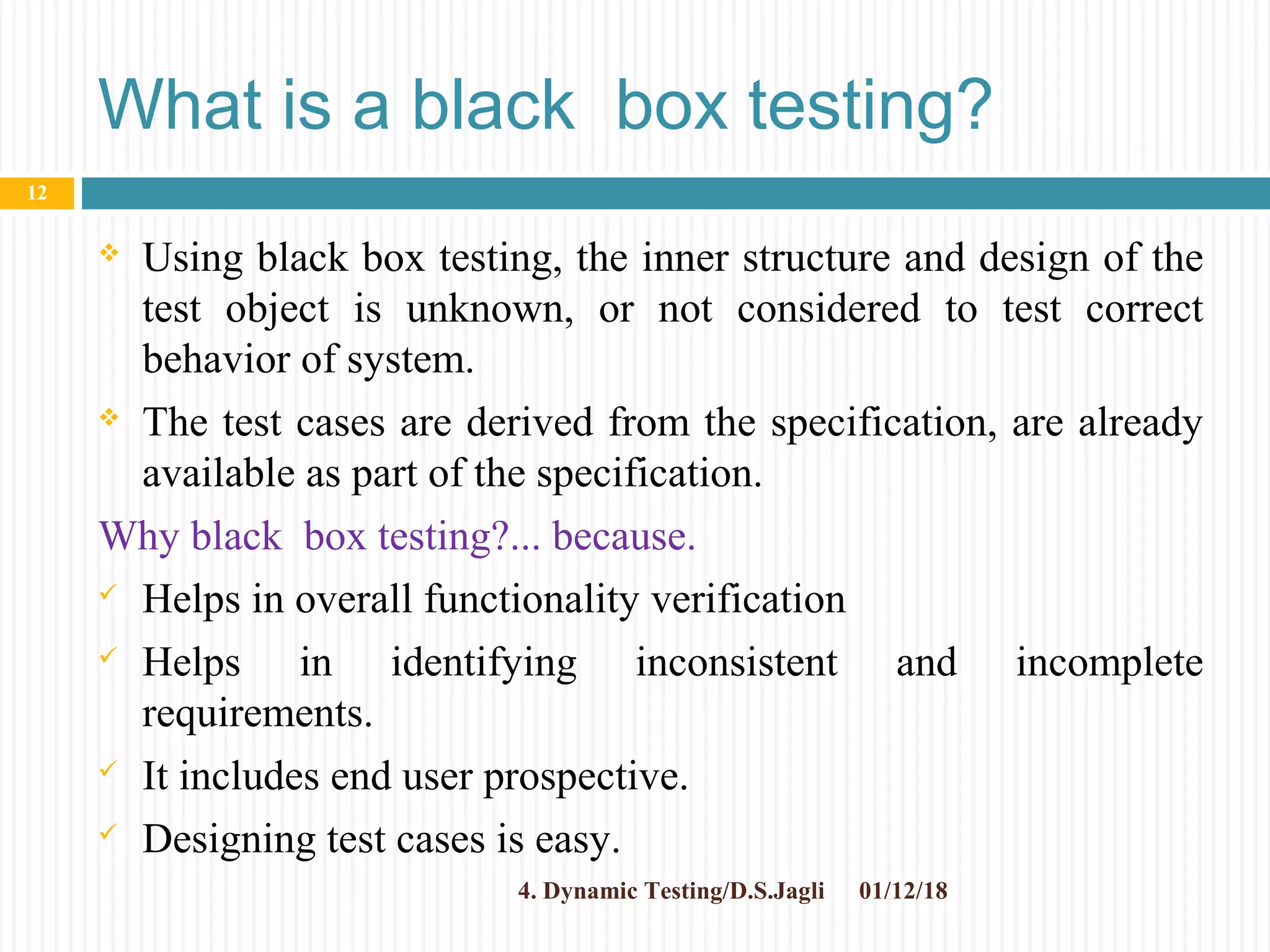




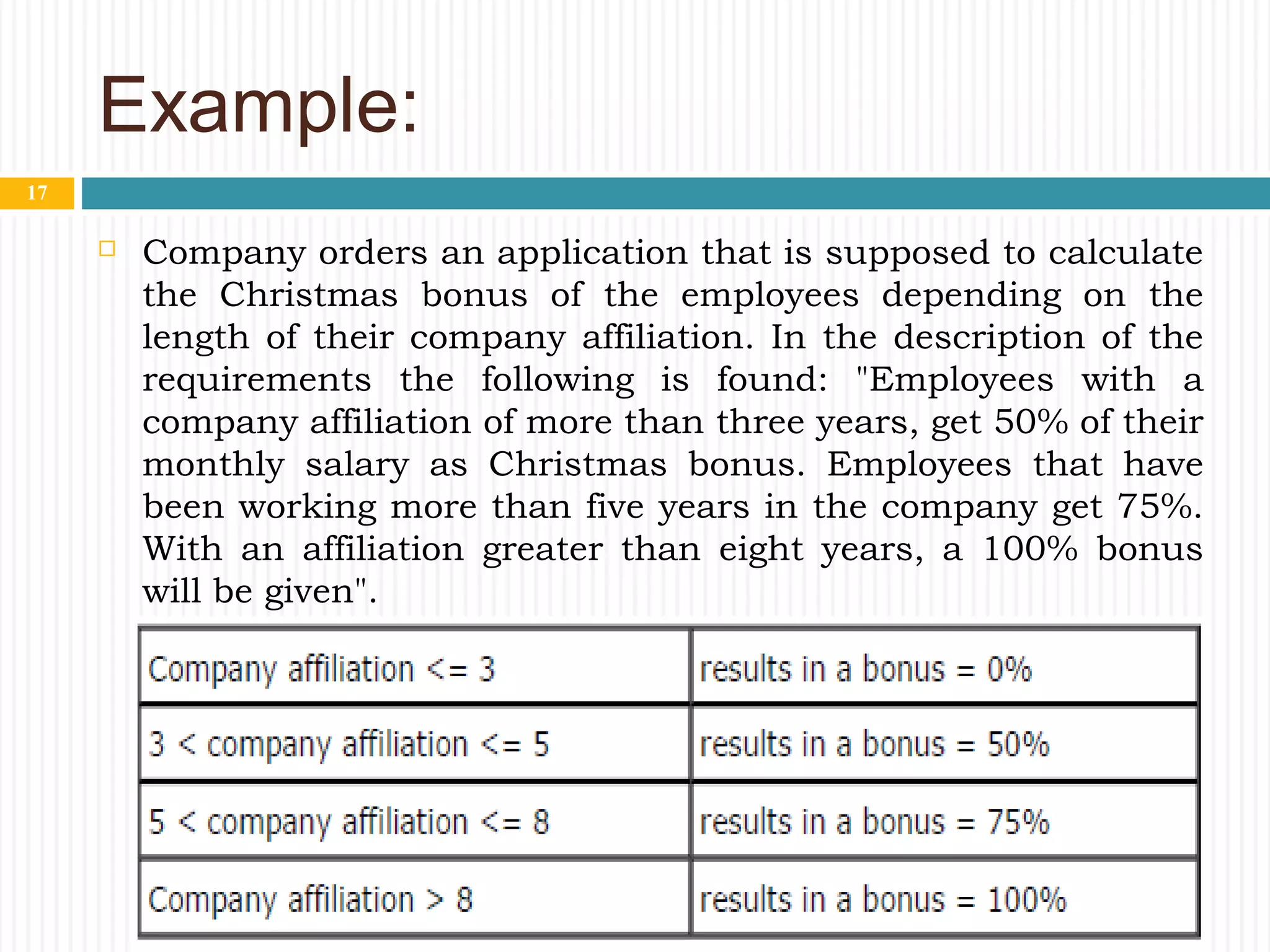

![Equivalence classes with incorrect
values
01/12/184. Dynamic Testing/D.S.Jagli
19
Parameter Equivalence classes Representative
values
Bonus calculation
program, duration of
employment in years
iEC1: x < 0
("Negative" – thus incorrect –
staff membership in a
company)
-3
iEC2: x > 70
(Unrealistically long and
incorrect staff membership in
a company[]
)
80](https://image.slidesharecdn.com/4-180112061617/75/4-dynamic-analysis-19-2048.jpg)
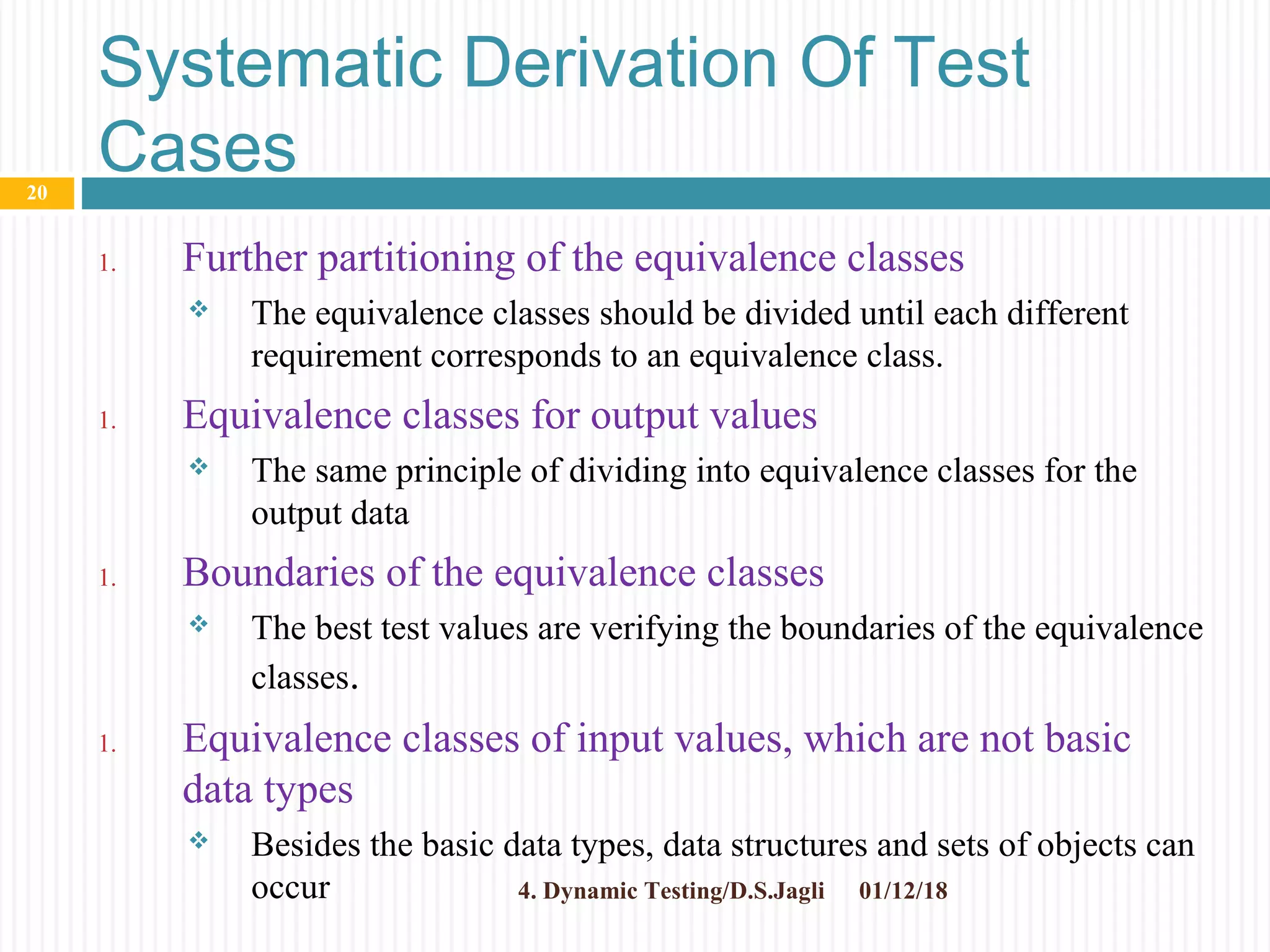
![Boundaries Of The Equivalence
Classes
01/12/184. Dynamic Testing/D.S.Jagli
21
Equivalence classes and representatives for
integer values
Parameter Equivalence classes Representatives
Employee
Affiliation
vEC1: [MIN_INT, ..., 0[[]
vEC2: [0, ..., MAX_INT]
iEC1: NaN (Not a Number)
61
100
"f"](https://image.slidesharecdn.com/4-180112061617/75/4-dynamic-analysis-21-2048.jpg)




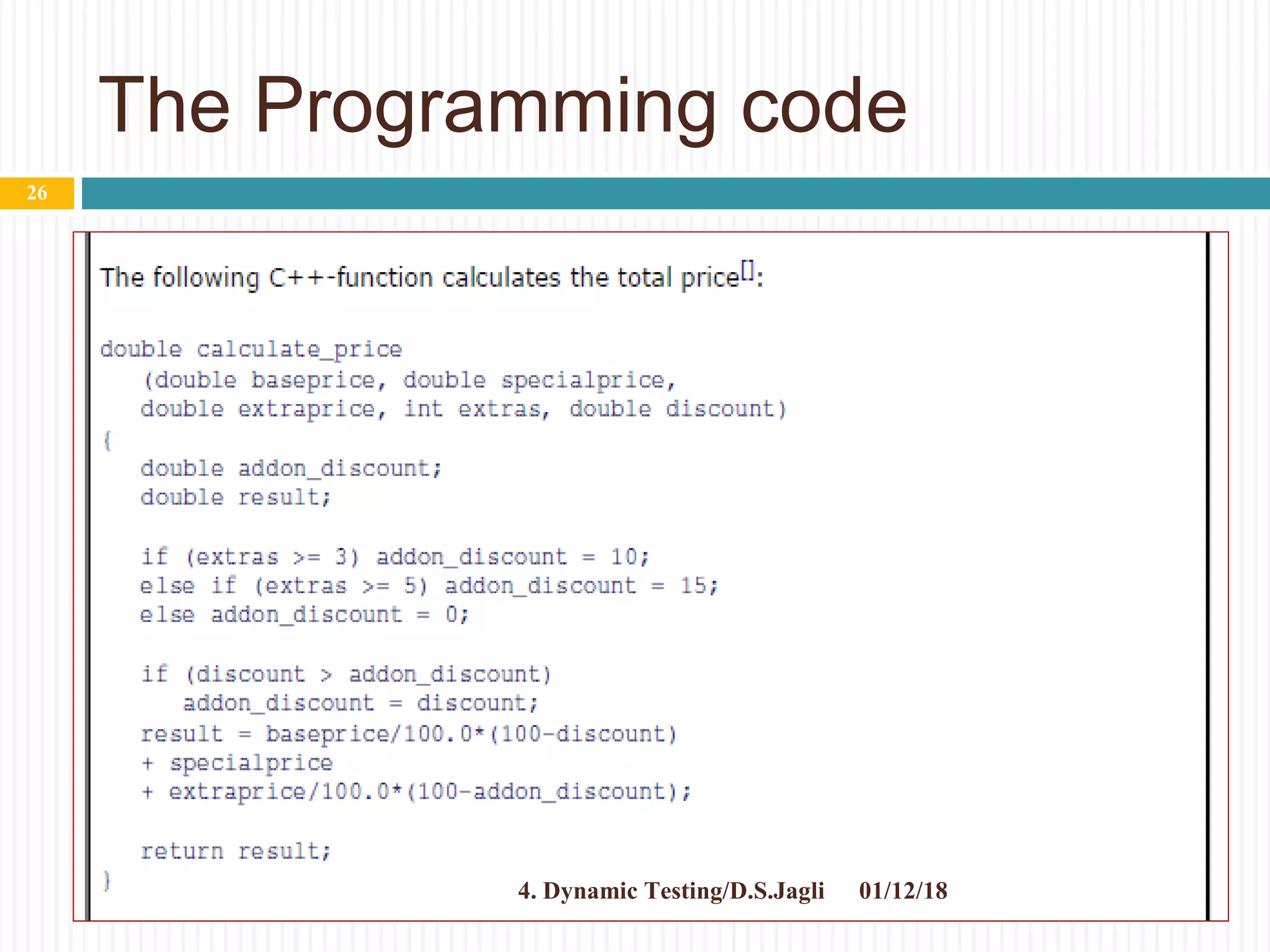
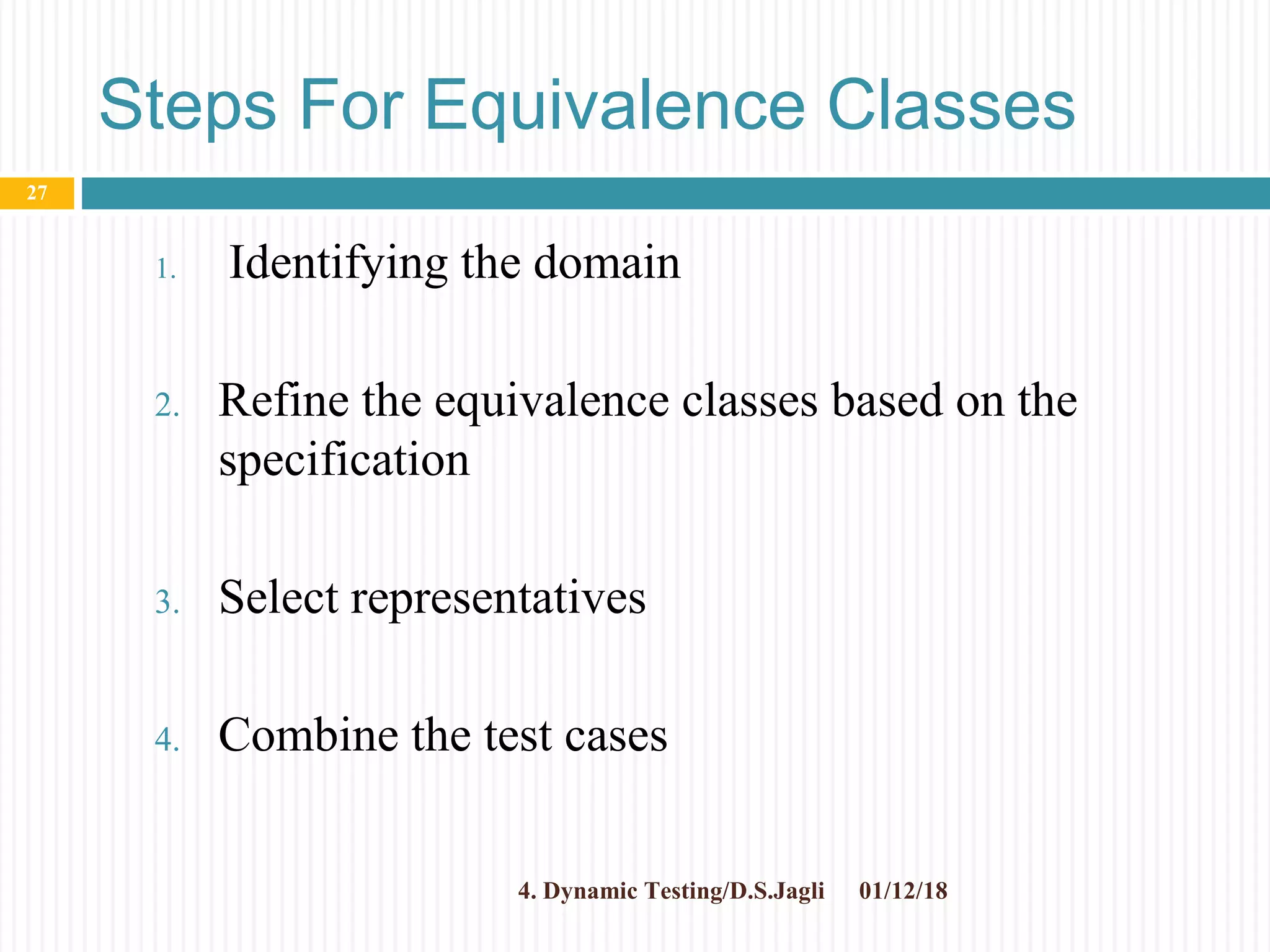
![1: Identifying The Domain
Equivalence classes for integer input values
Parameter Equivalence classes
baseprice vEC11: [MIN_DOUBLE, ..., MAX_DOUBLE]
iEC11: NaN
specialprice vEC21: [MIN_DOUBLE, ..., MAX_DOUBLE]
iEC21: NaN
extraprice vEC31: [MIN_DOUBLE, ..., MAX_DOUBLE]
iEC31: NaN
extras vEC41: [MIN_INT, ..., MAX_INT]
iEC41: NaN
discount vEC51: [MIN_DOUBLE, ..., MAX_DOUBLE]
iEC51: NaN
01/12/184. Dynamic Testing/D.S.Jagli
28](https://image.slidesharecdn.com/4-180112061617/75/4-dynamic-analysis-28-2048.jpg)

![01/12/184. Dynamic Testing/D.S.Jagli30
Further partitioning of the equivalence classes of the parameter of the function
Calculate_price() with representatives
Parameter Equivalence classes Representatives
baseprice vEC11: [0, ..., MAX_DOUBLE] 20000.00
iEC11: [MIN_DOUBLE, ..., 0[
iEC12: NaN
-1.00
"abc"
specialprice vEC21: [0, ..., MAX_DOUBLE] 3450.00
iEC21: [MIN_DOUBLE, ..., 0[
iEC22: NaN
-1.00
"abc"
extraprice vEC31: [0, ..., MAX_DOUBLE] 6000.00
iEC31: [MIN_DOUBLE, ..., 0[
iEC32: NaN
-1.00
"abc"
exTRas vEC41: [0, ..., 2]
vEC42: [3, 4]
vEC43: [5, ..., MAX_INT]
1
3
20
iEC41: [MIN_INT, ..., 0[
iEC42: NaN
-1.00
"abc"
discount vEC51: [0, ..., 100] 10.00
iEC : [MIN_DOUBLE, ..., 0[ -1.00](https://image.slidesharecdn.com/4-180112061617/75/4-dynamic-analysis-30-2048.jpg)
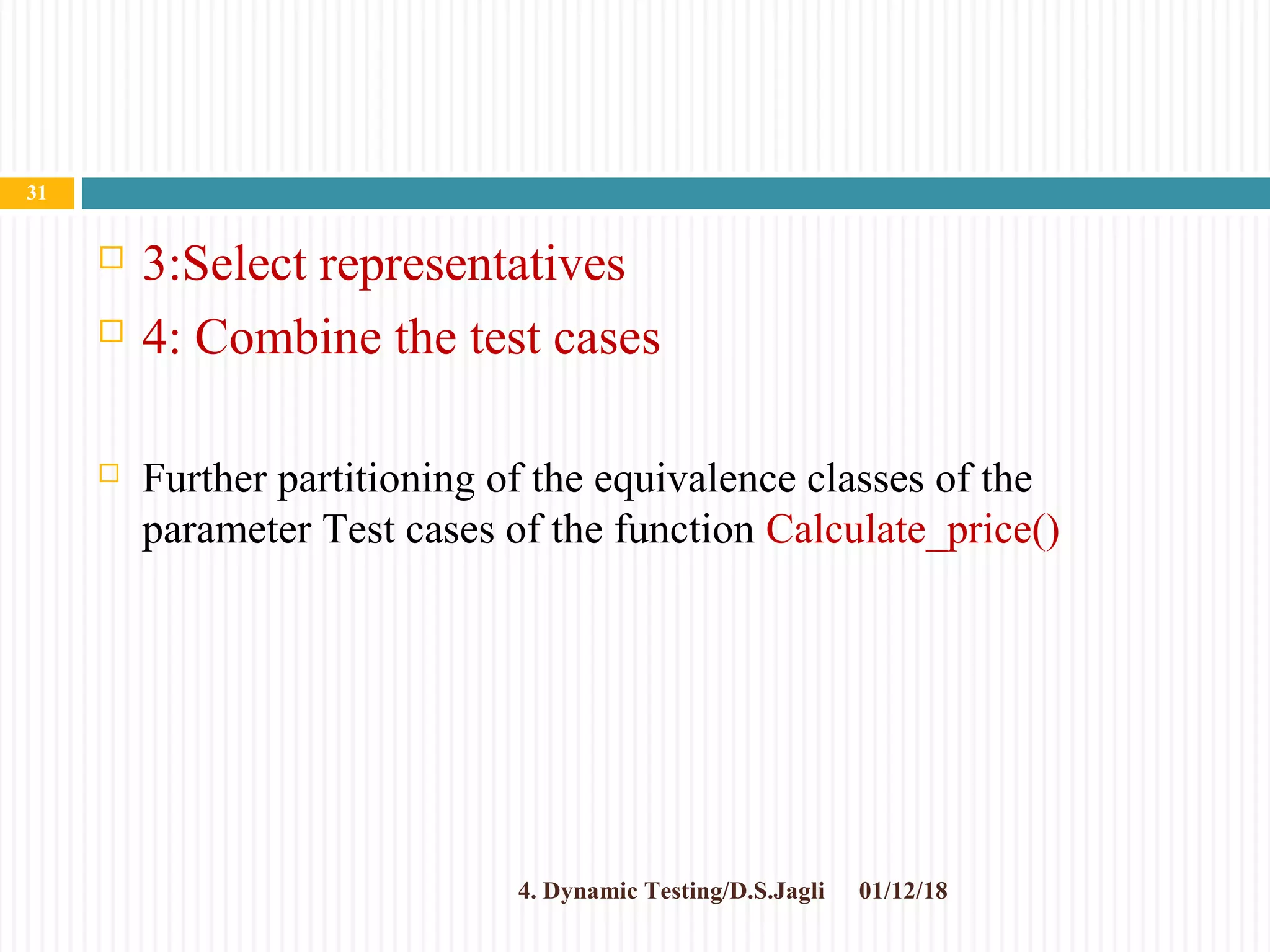
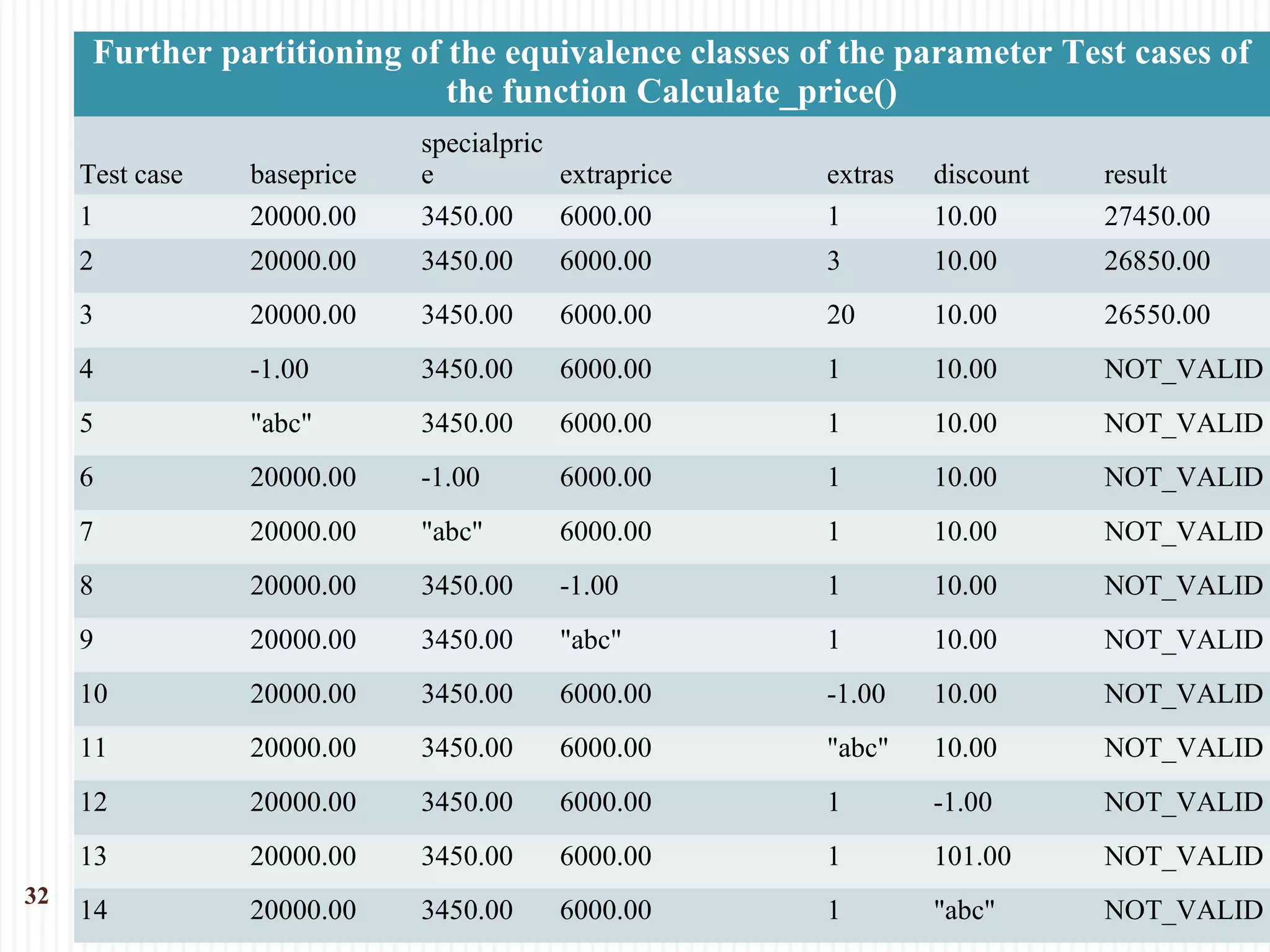
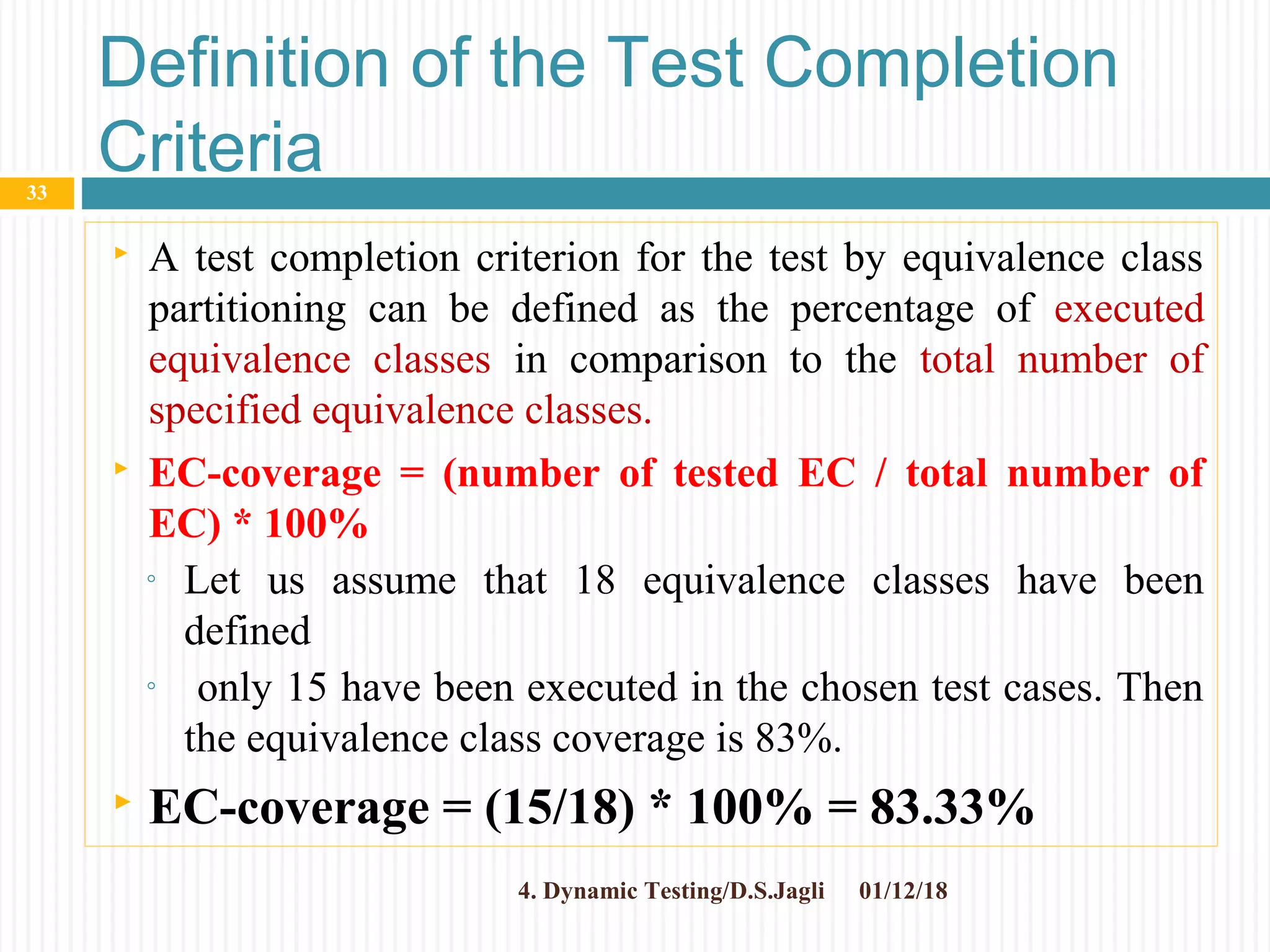

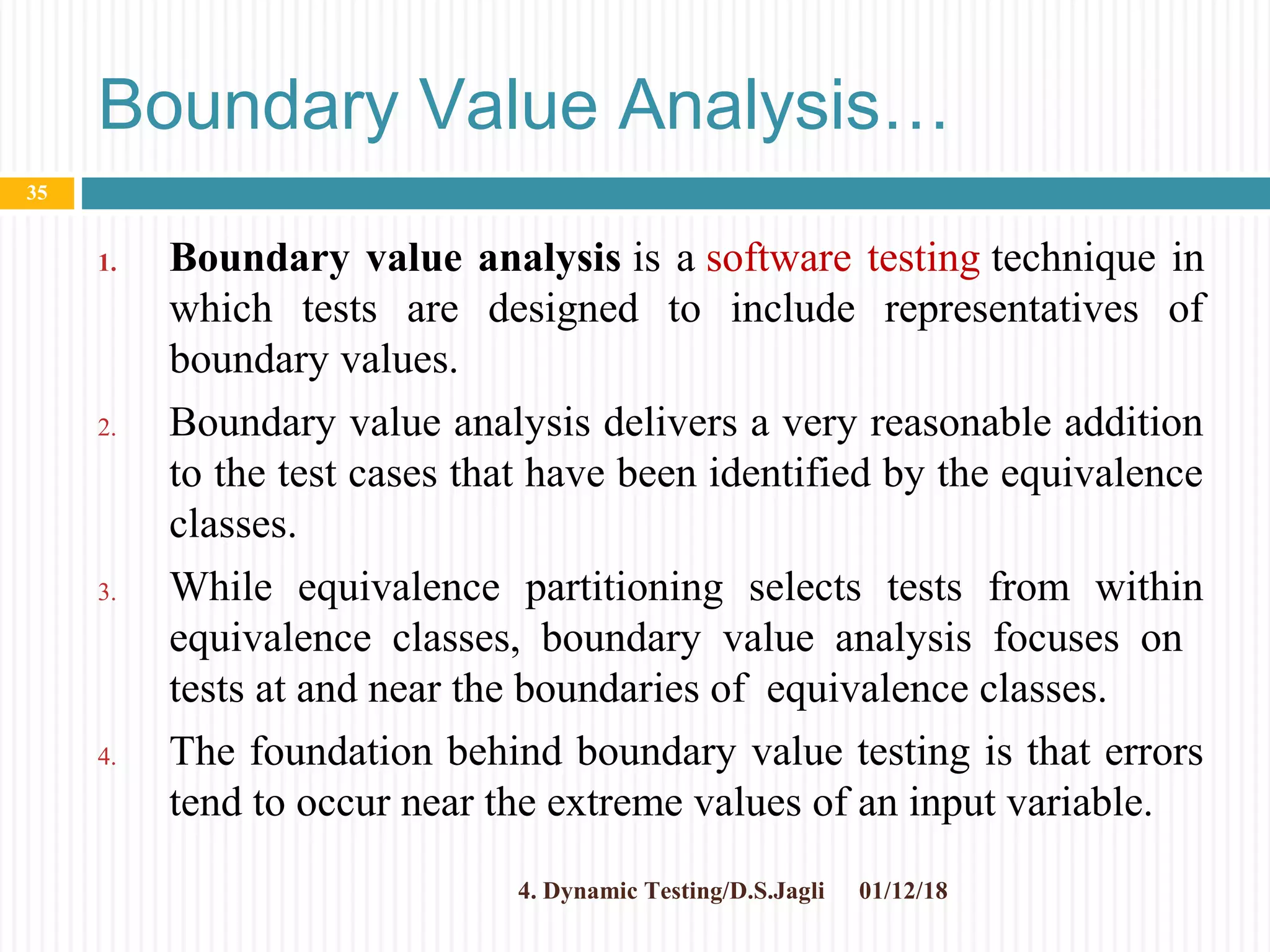

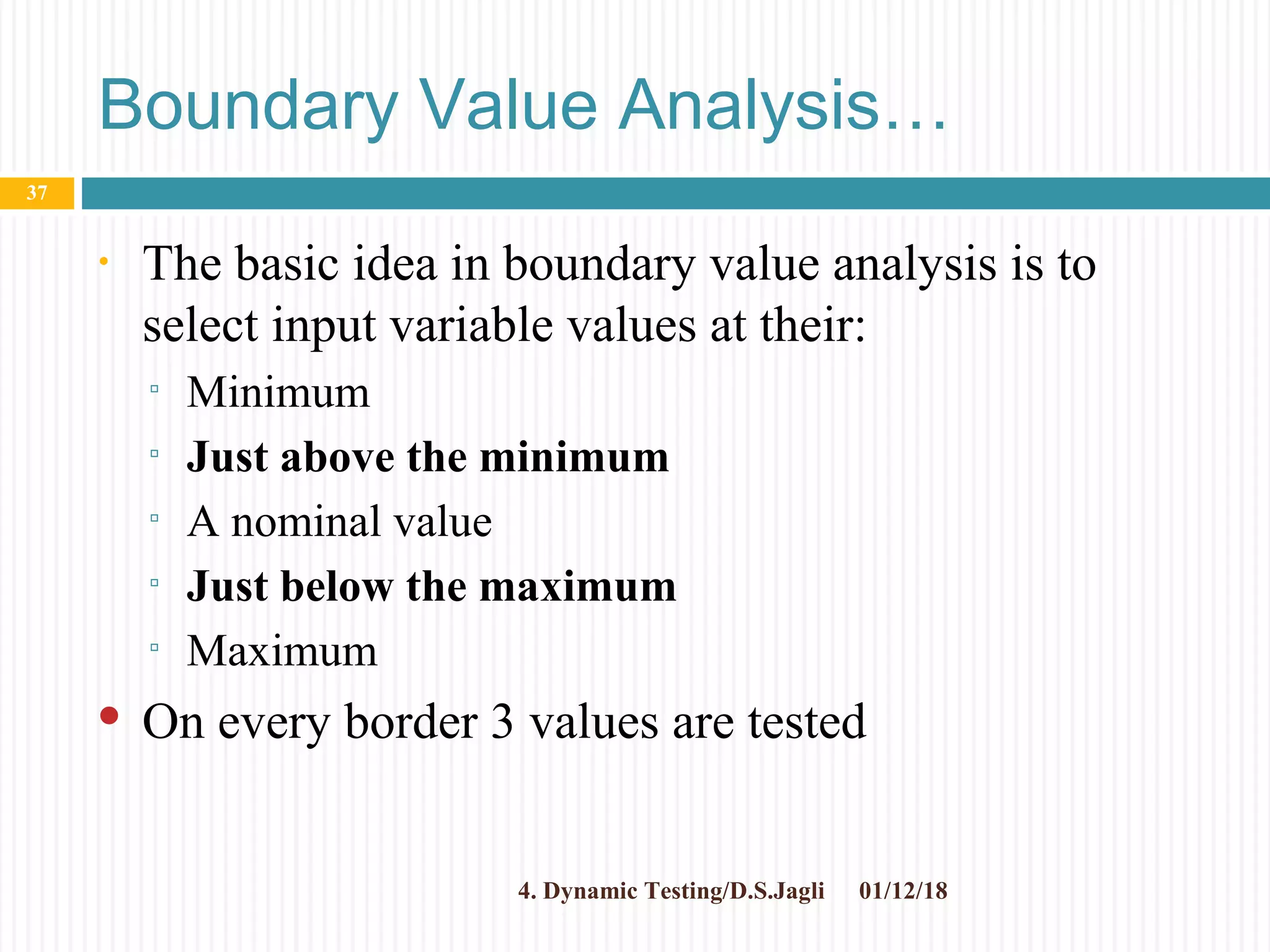



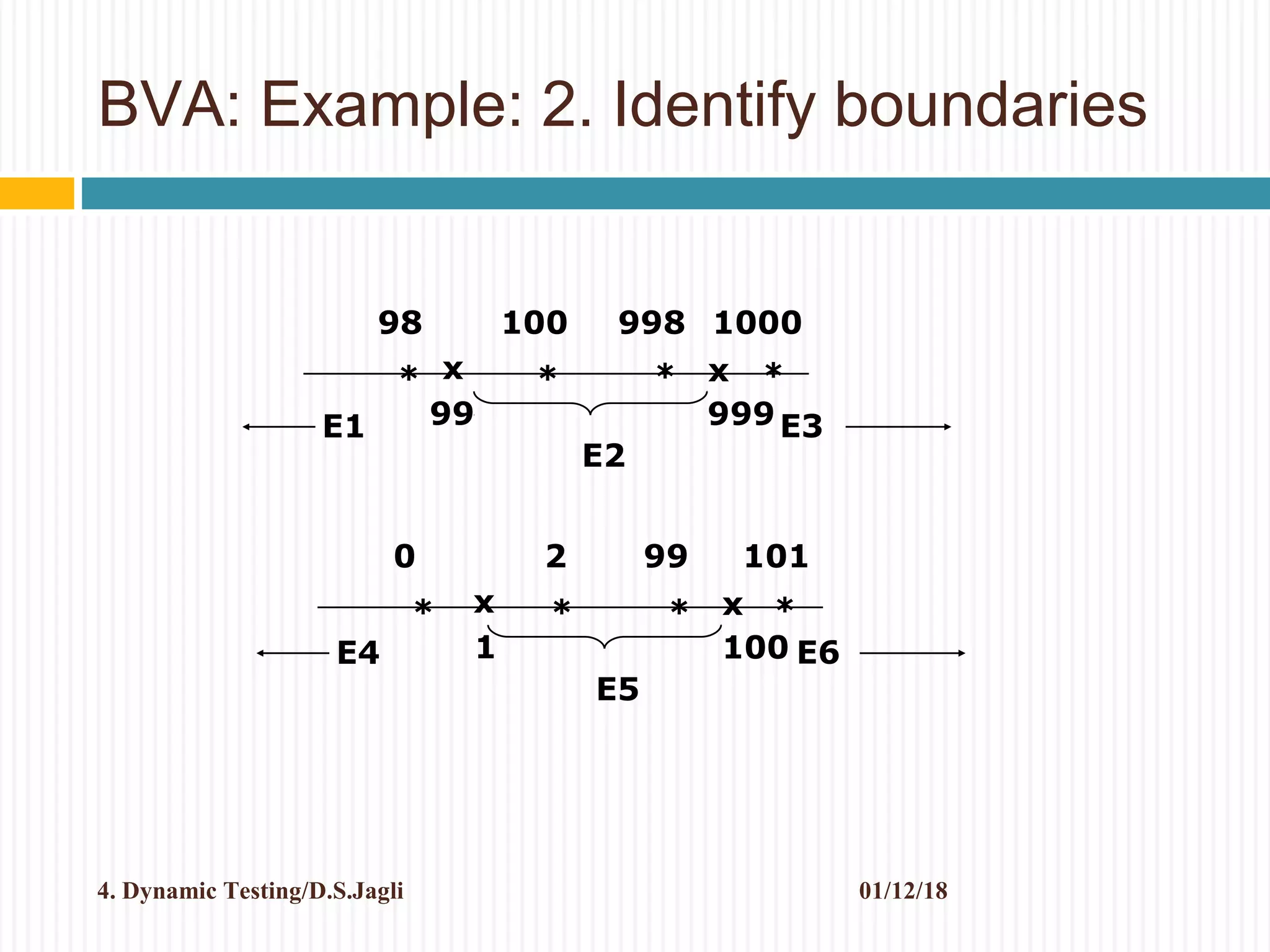
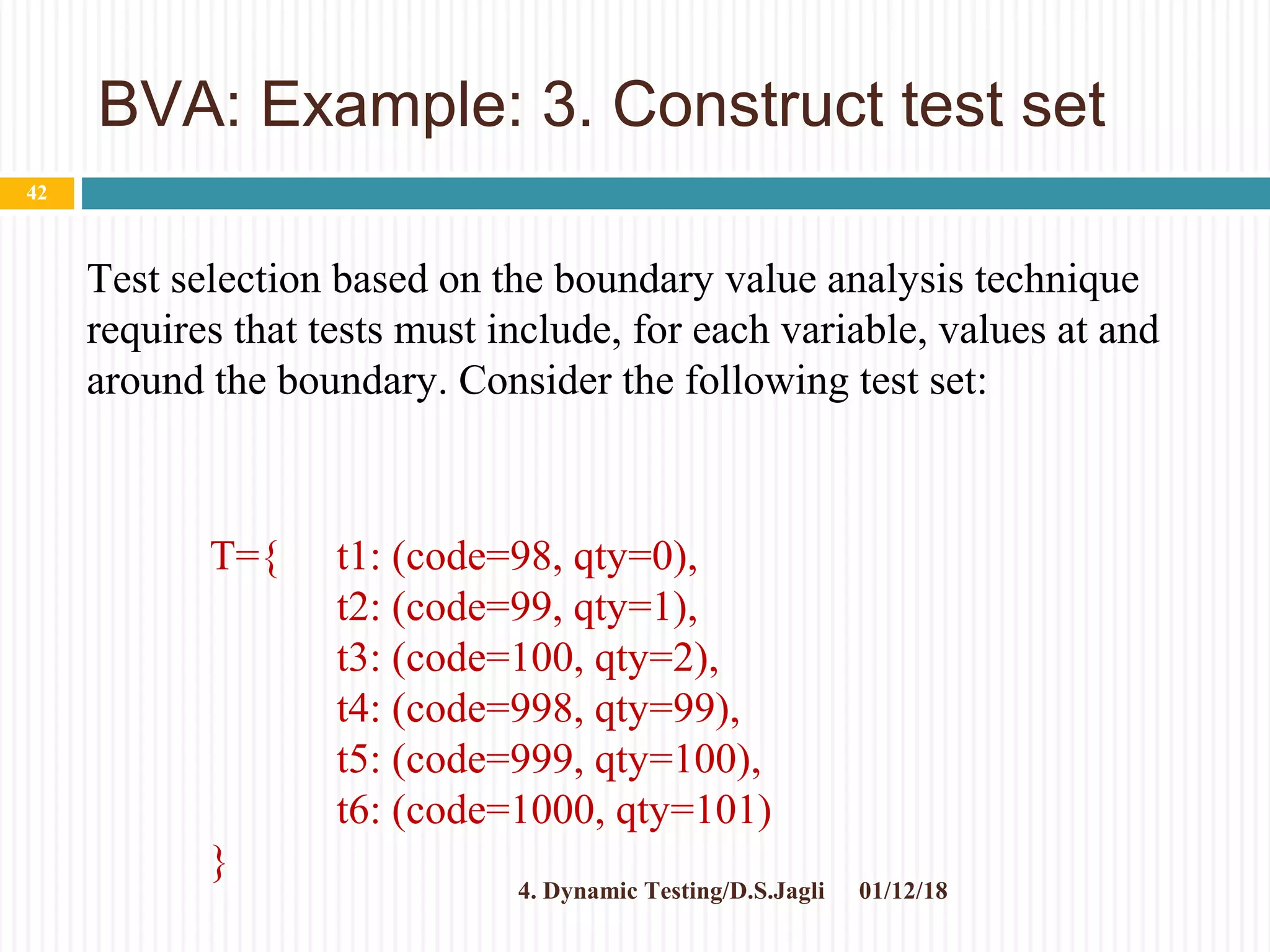

![Example: Boundary value test for
calculate_price()
Boundaries of the parameters of the function calculate_price()
Parameter
Lower boundary value [Equivalence class] Upper
boundary value
baseprice 0-δ, [0, 0+δ, ..., MAX_DOUBLE-δ,
MAX_DOUBLE], MAX_DOUBLE+δ
specialprice Same values as baseprice
extraprice Same values as baseprice
-1, [0, 1, 2], 3
2, [3, 4], 5
4, [5, 6, ..., MAX_INT-1, MAX_INT],
MAX_INT+1
discount 0-δ, [0, 0+δ, ..., 100-δ, 100], 100+δ
01/12/184. Dynamic Testing/D.S.Jagli
44](https://image.slidesharecdn.com/4-180112061617/75/4-dynamic-analysis-44-2048.jpg)

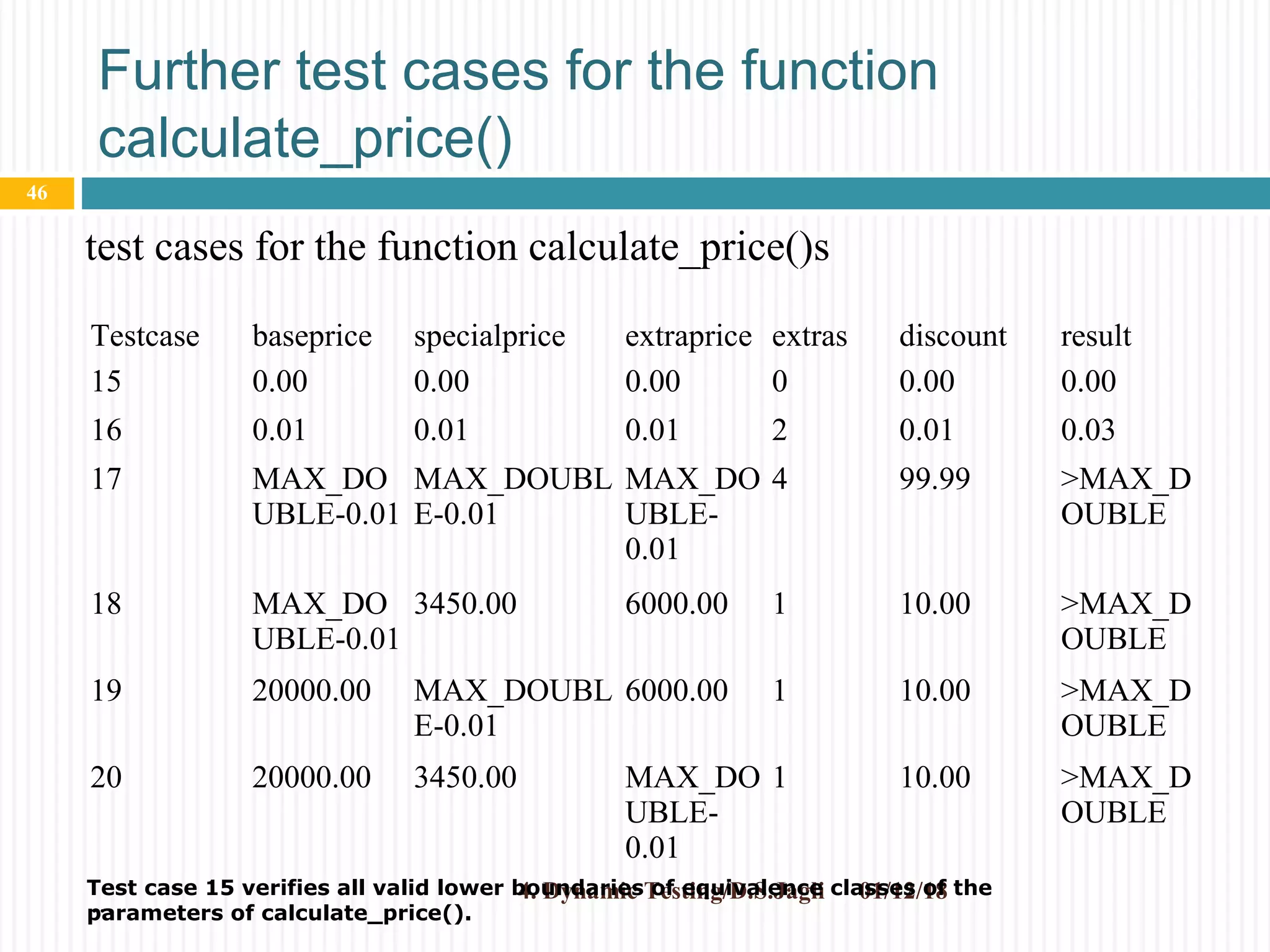
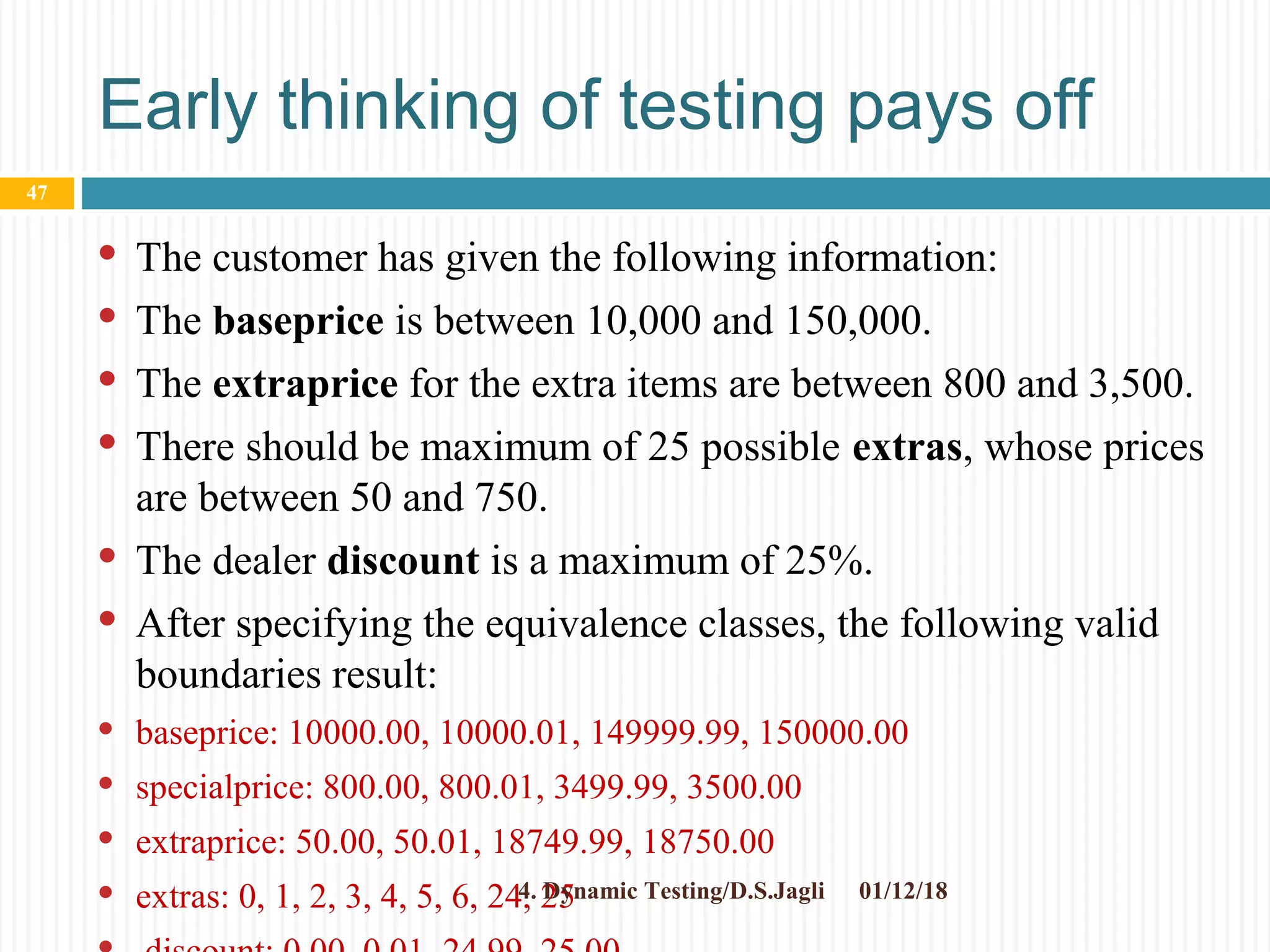

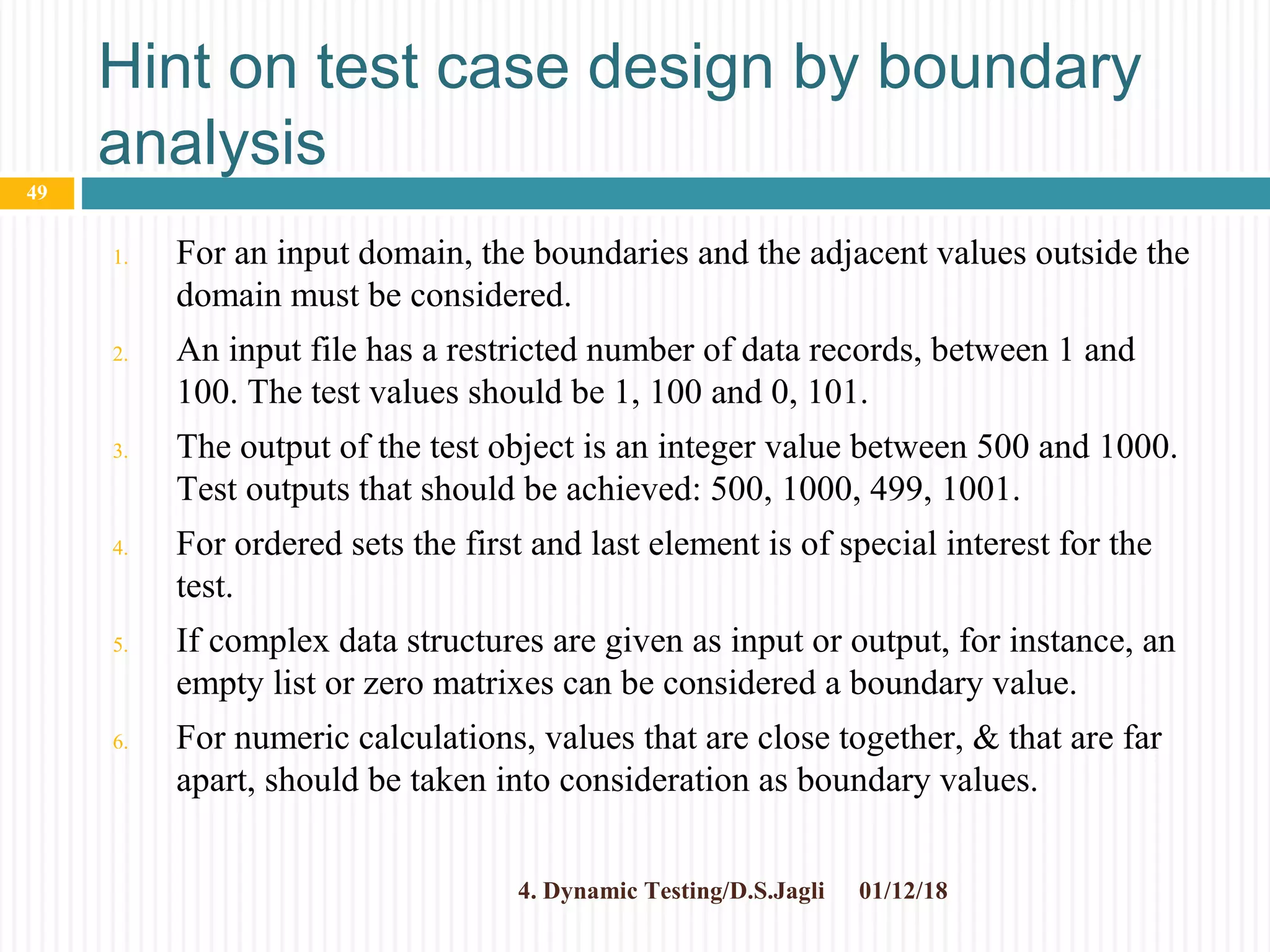



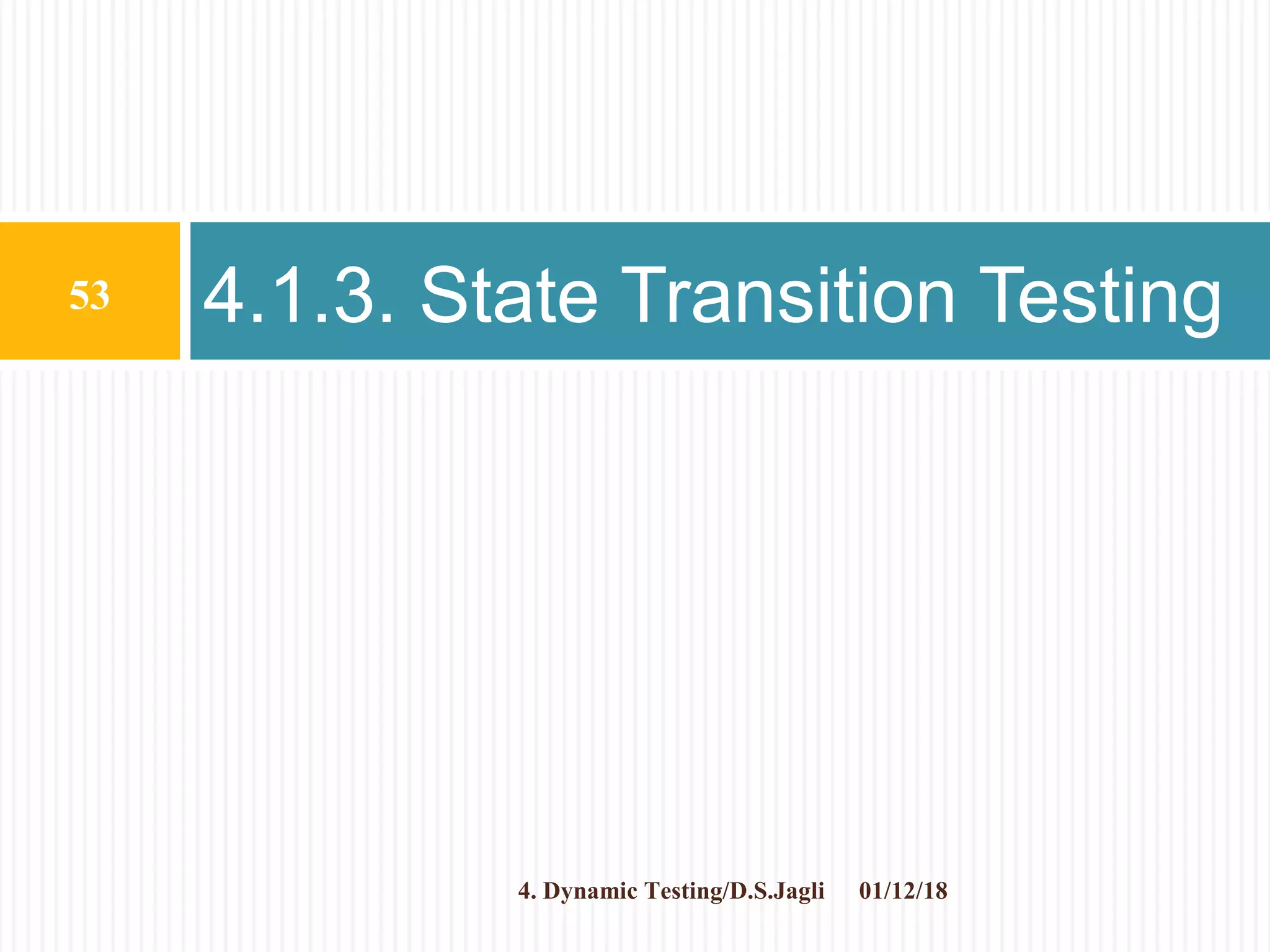

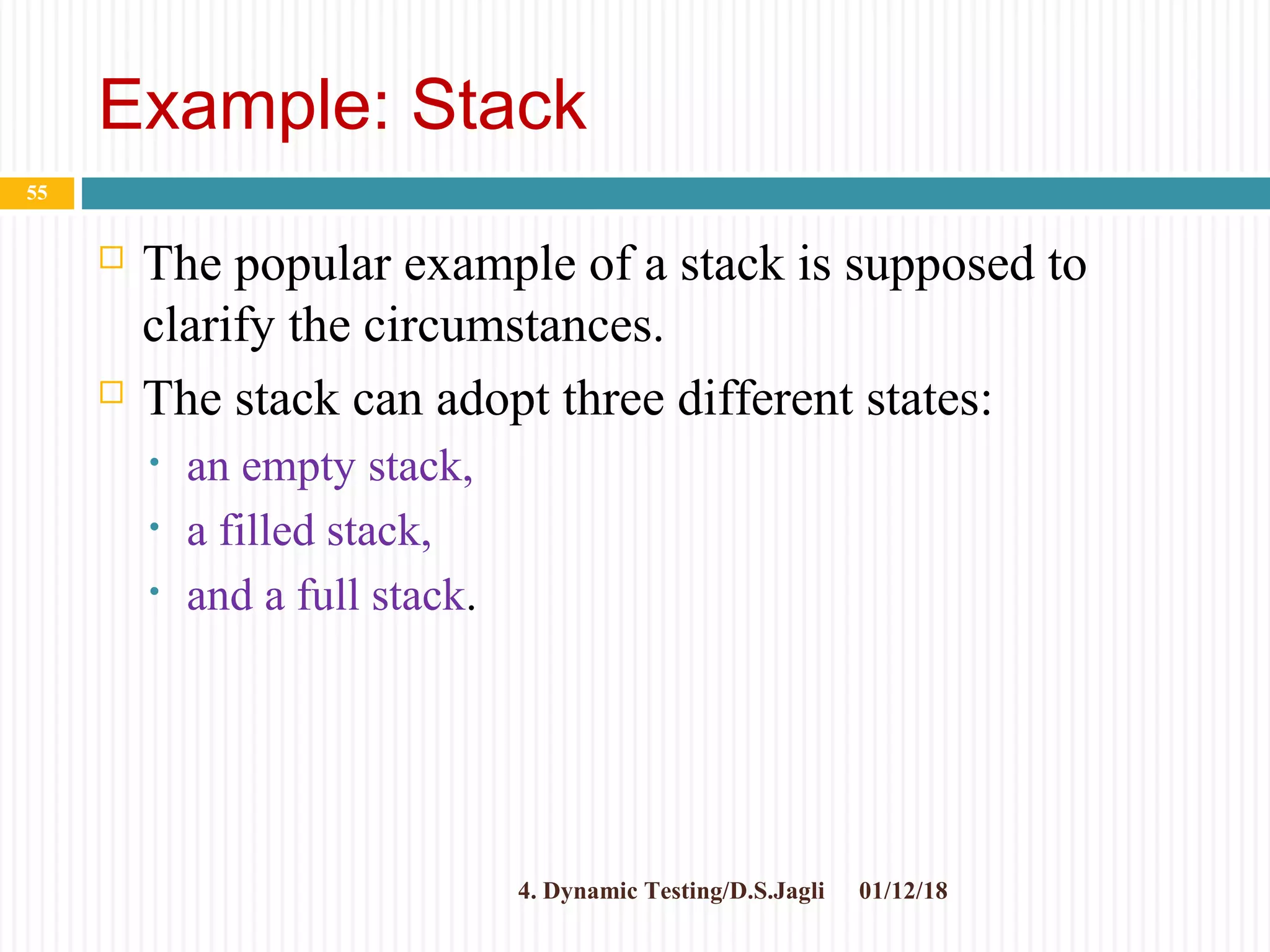
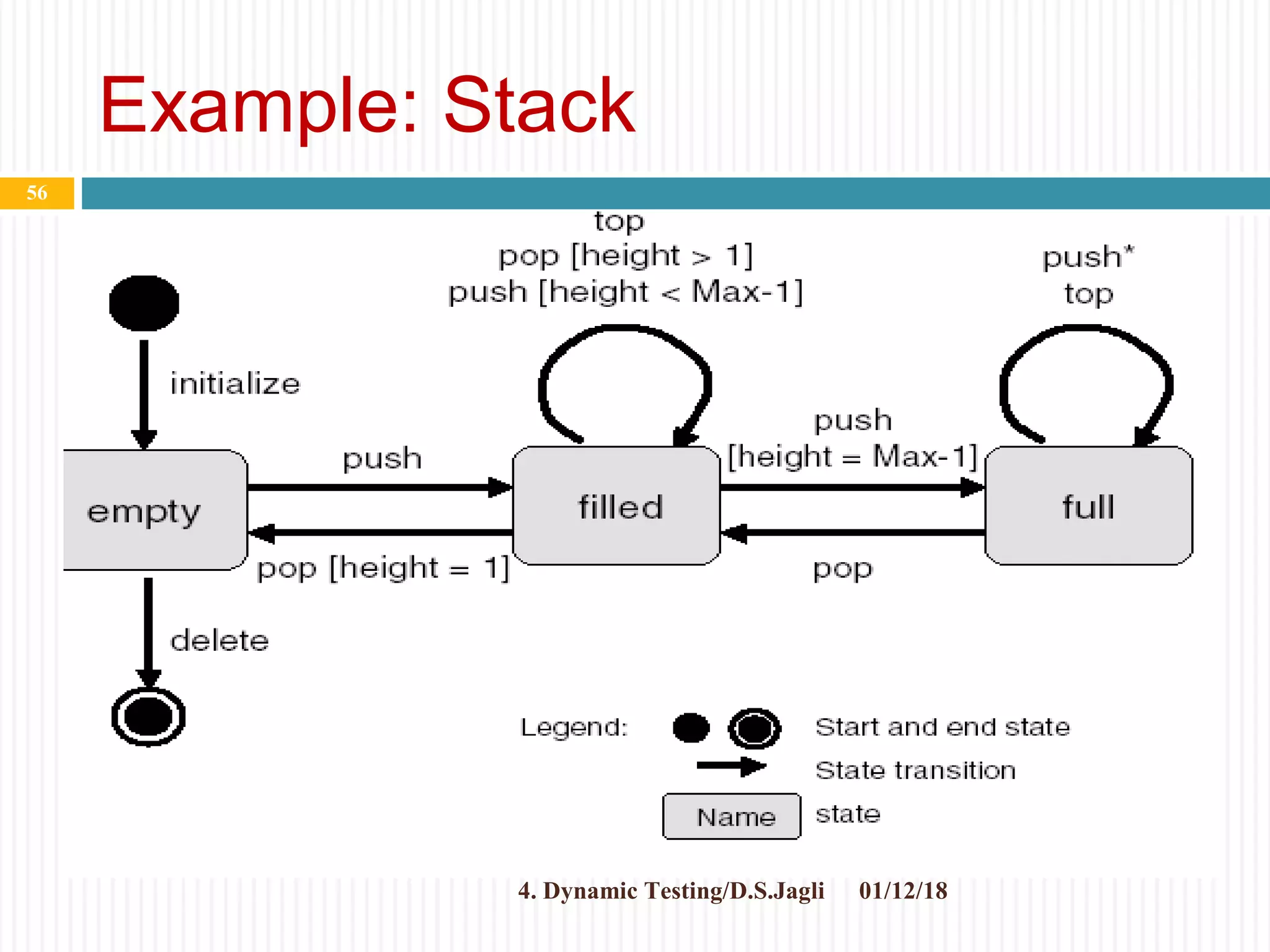
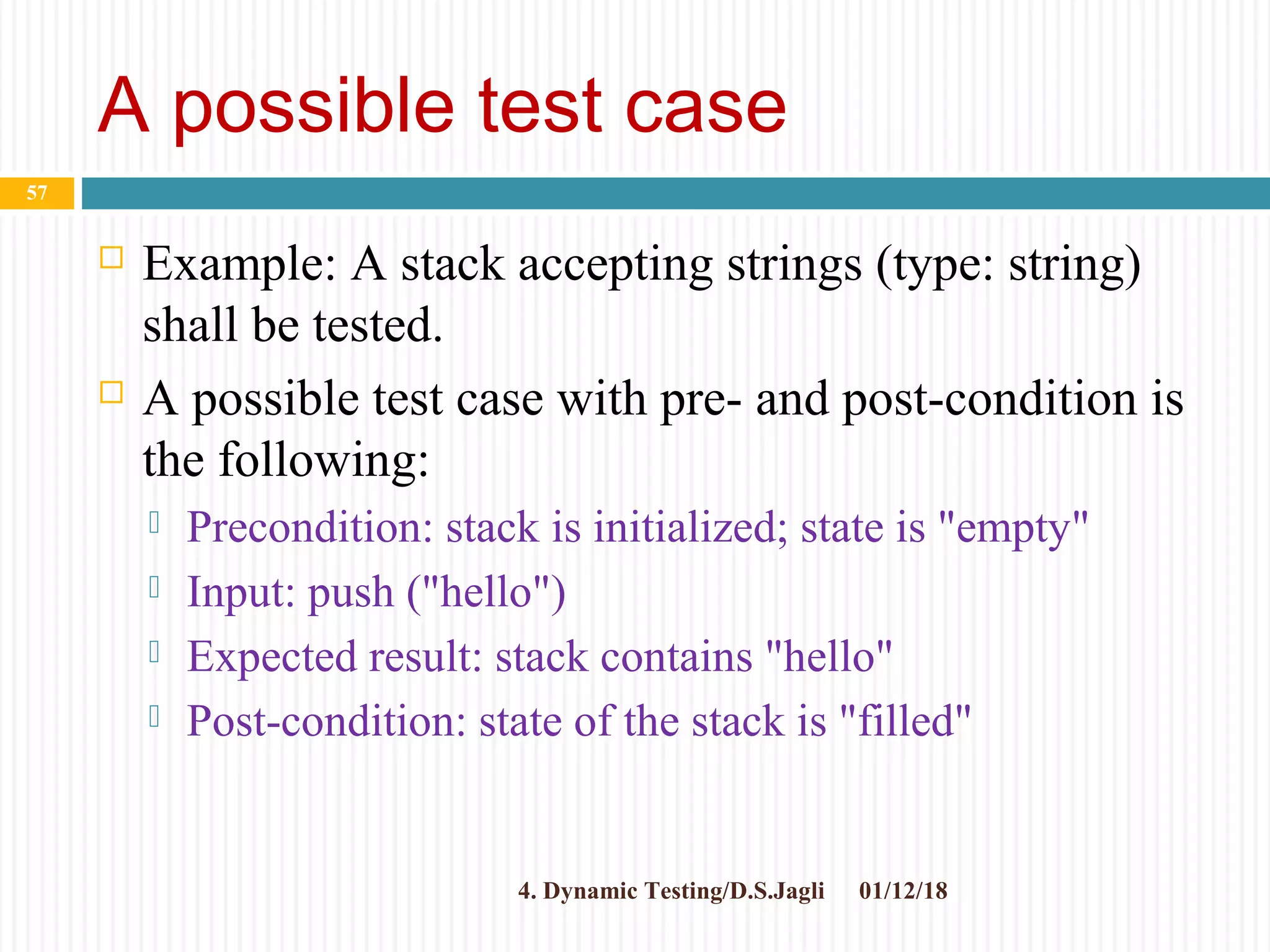
![Test object for state transition
testing
1. In state transition testing the test object can be a
complete system with different system states
2. a class in an object-oriented system with different
states.
3. whenever the history leads to differing behavior, a
state transition test must be applied.
Further test cases for the stack example
Test case 1: initialize [empty], push [filled], push, push,
push [full].
Test case 2: initialize [empty], push [filled], top, pop
[empty], delete.
01/12/184. Dynamic Testing/D.S.Jagli
58](https://image.slidesharecdn.com/4-180112061617/75/4-dynamic-analysis-58-2048.jpg)
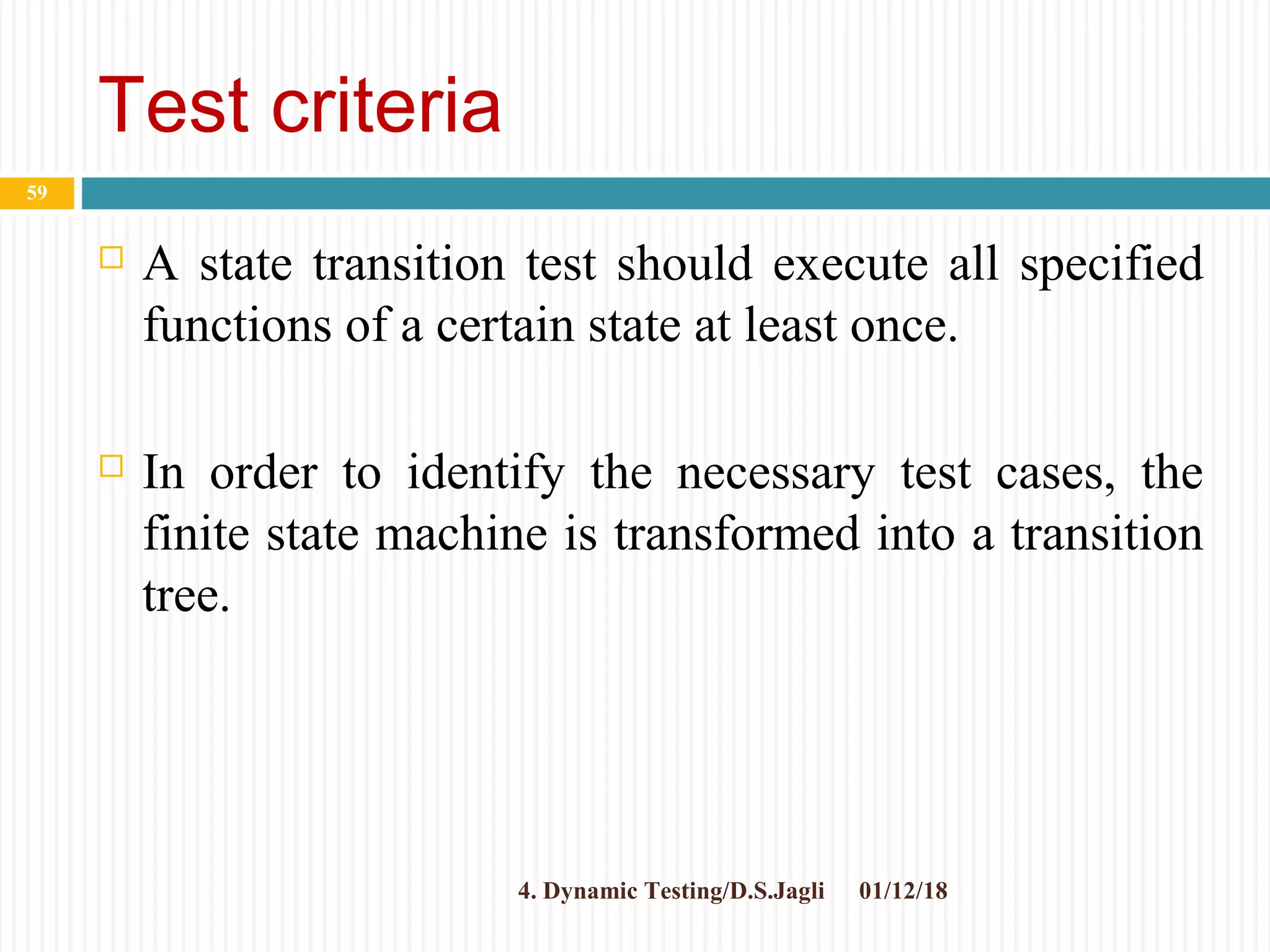


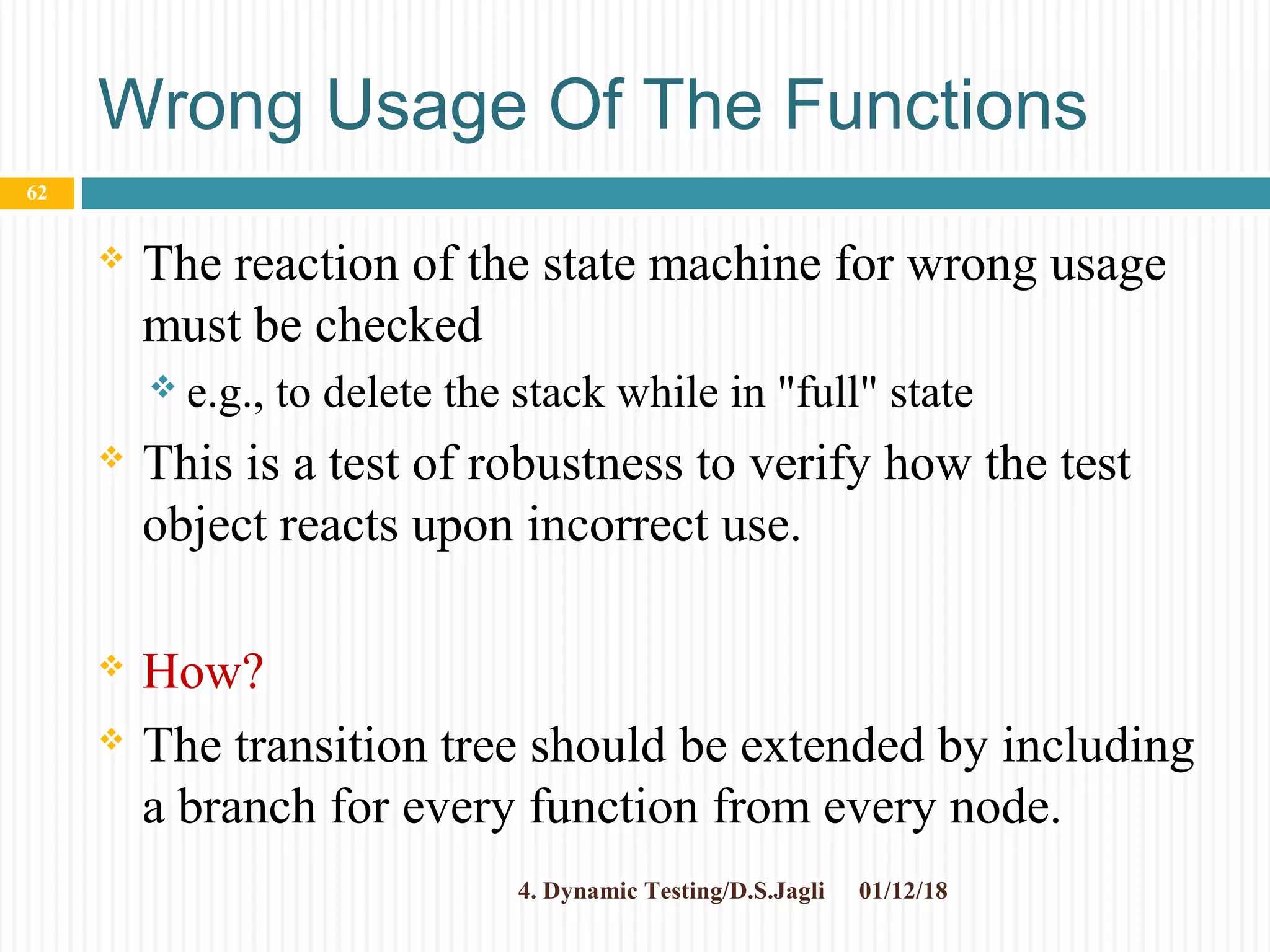



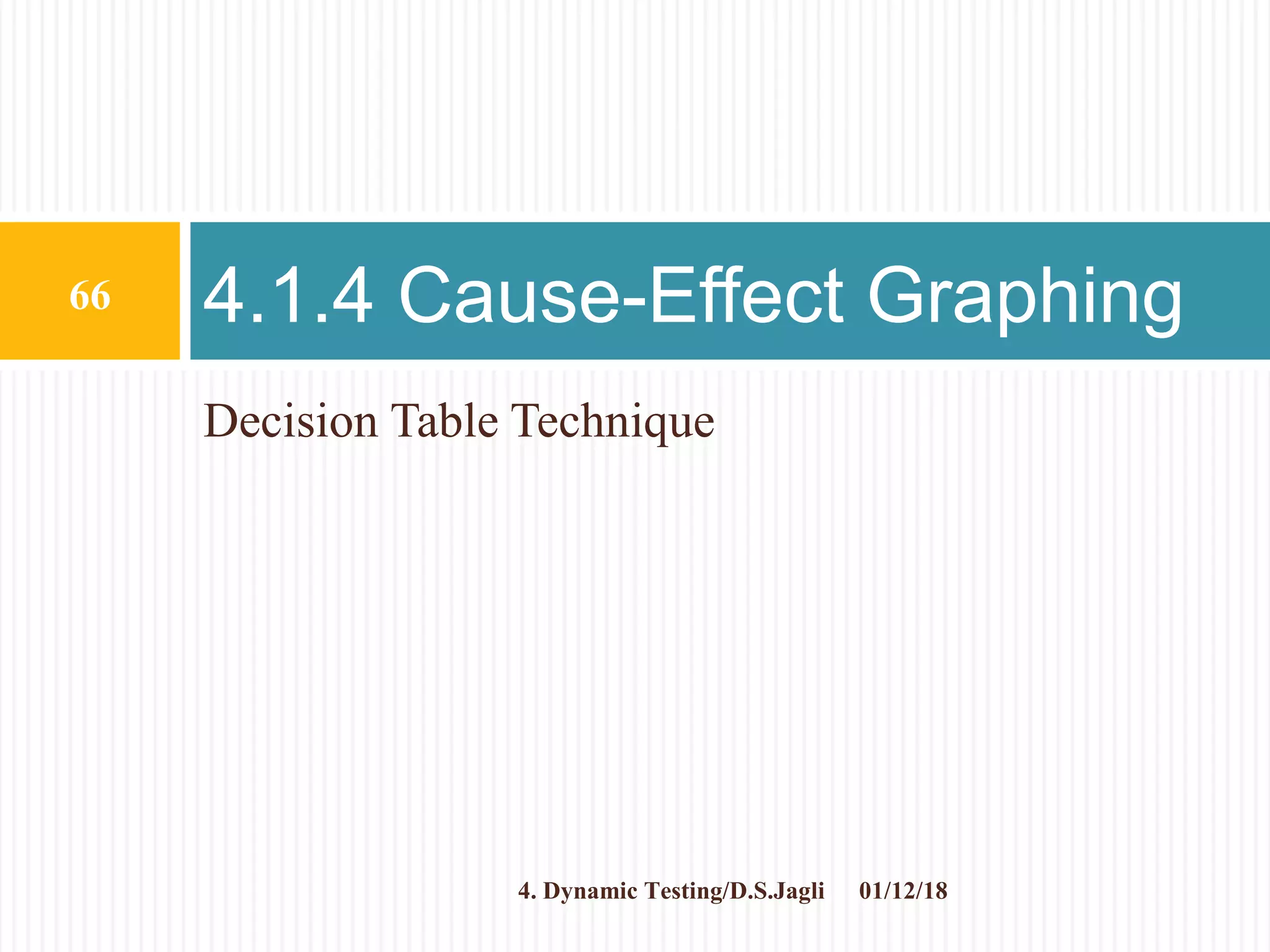
![Example: Cause-effect graph
analysis for an ATM
withdrawing money at ATM
The following conditions must be fulfilled[]
:
1. The bankcard is valid
2. The PIN must be correctly entered
3. The maximum number of PIN inputs is three
4. There is money in the machine, and in the account
The following actions are possible at the machine:
1. Reject card
2. Ask for another PIN input
3. "Eat" the card
4. Ask for an alternate dollar amount
5. Pay the requested amount of money
01/12/184. Dynamic Testing/D.S.Jagli
67](https://image.slidesharecdn.com/4-180112061617/75/4-dynamic-analysis-67-2048.jpg)

